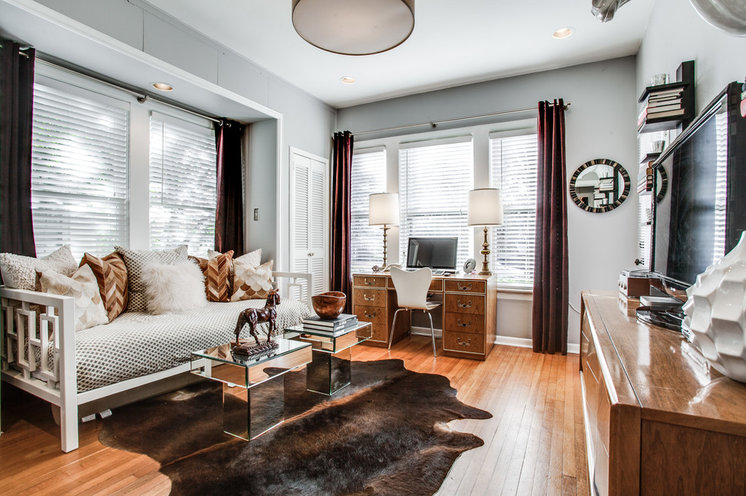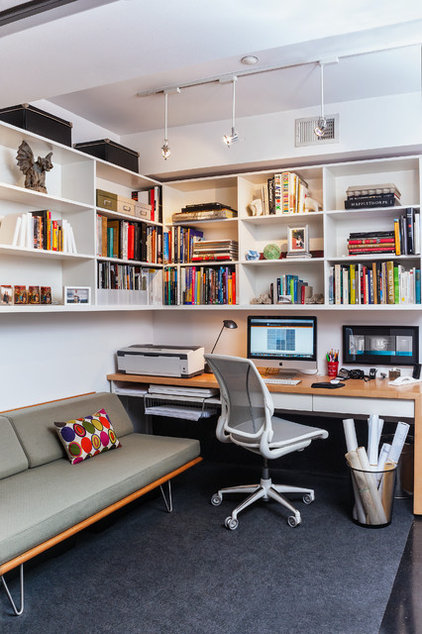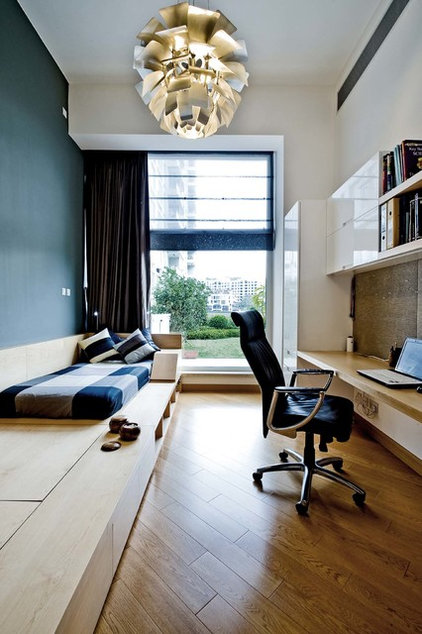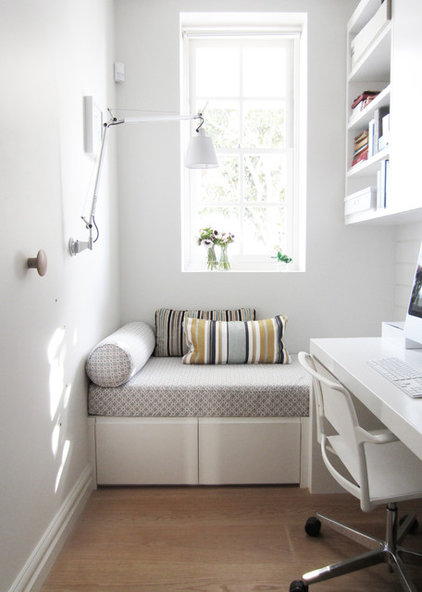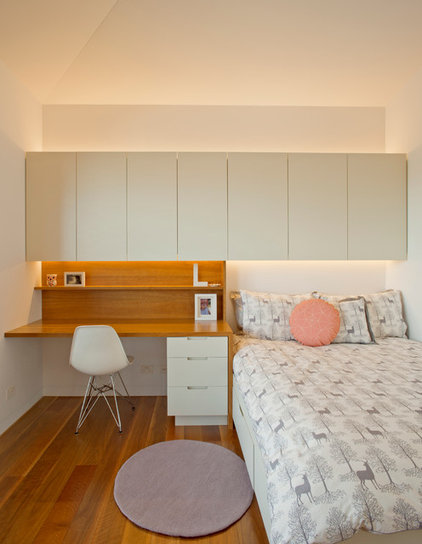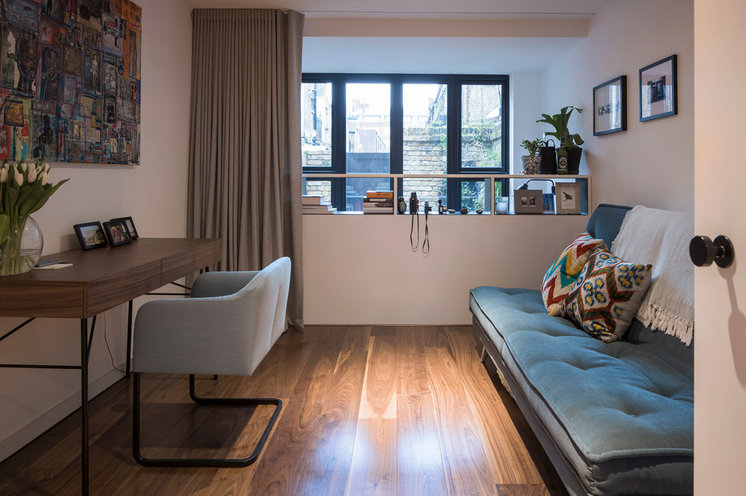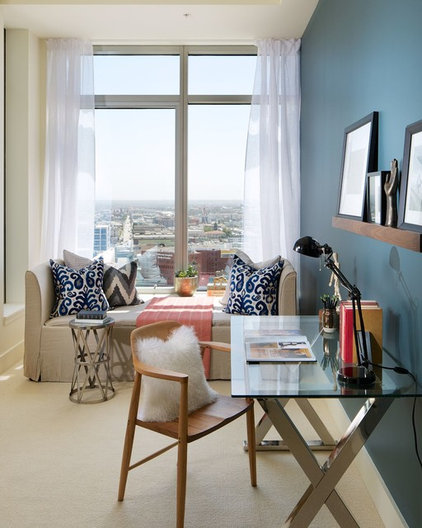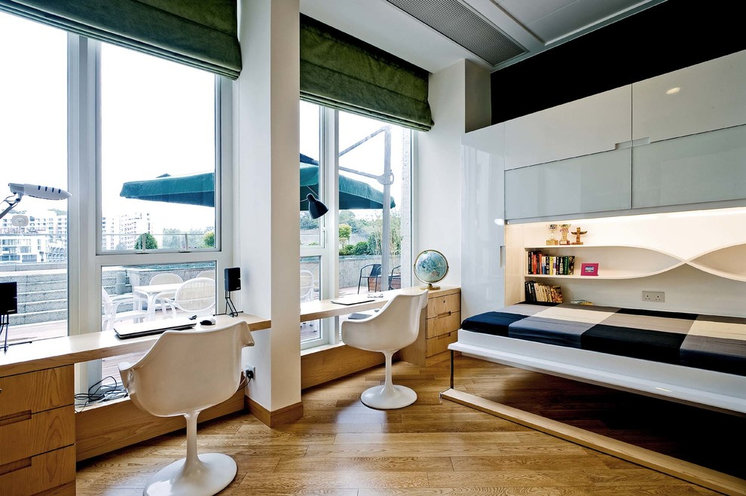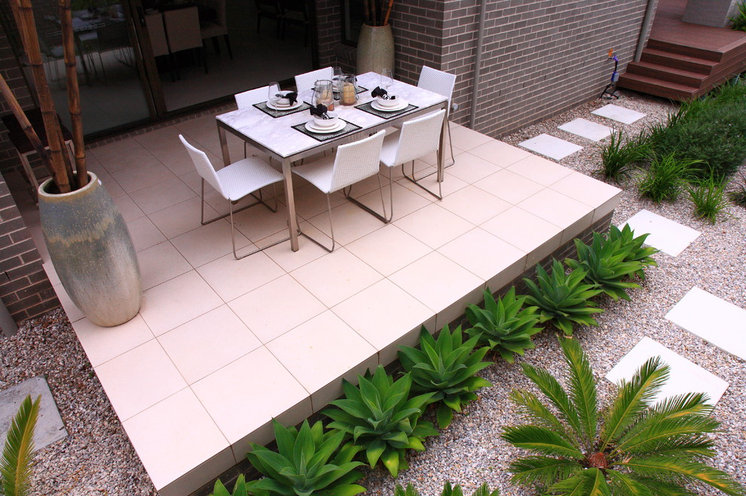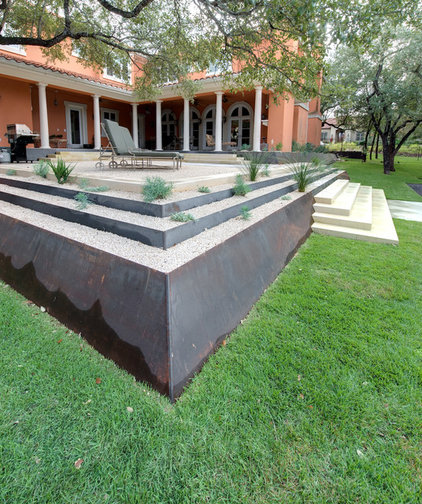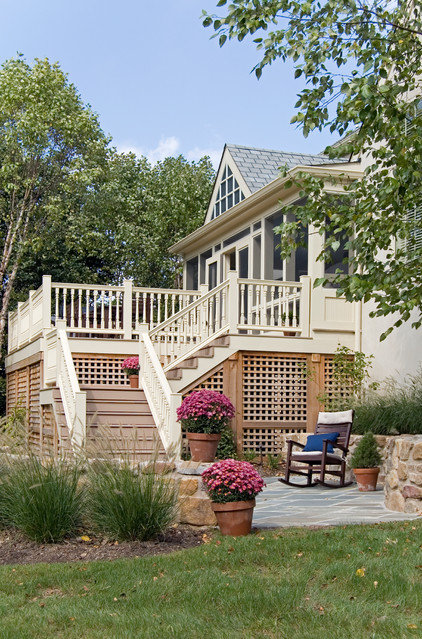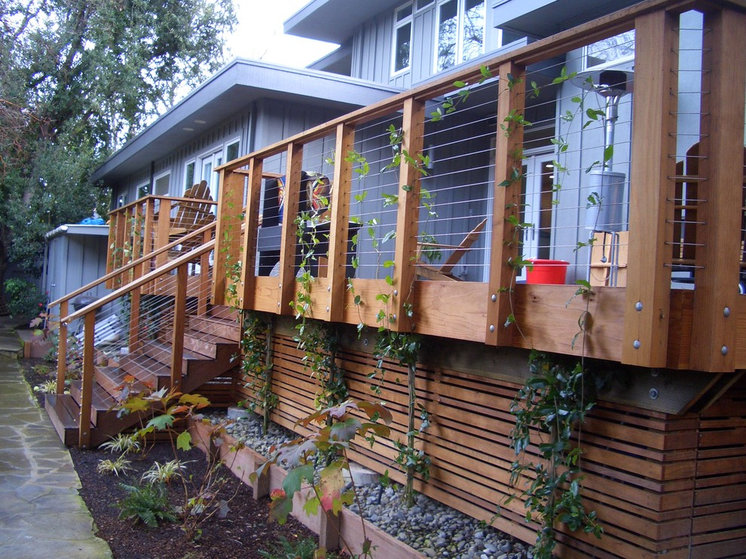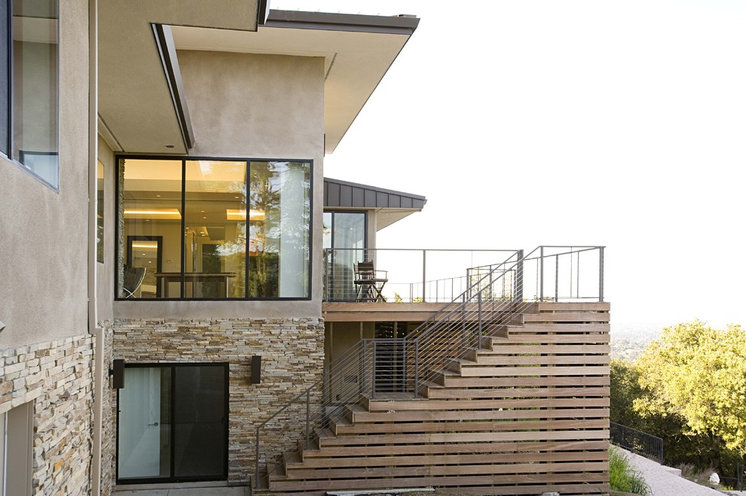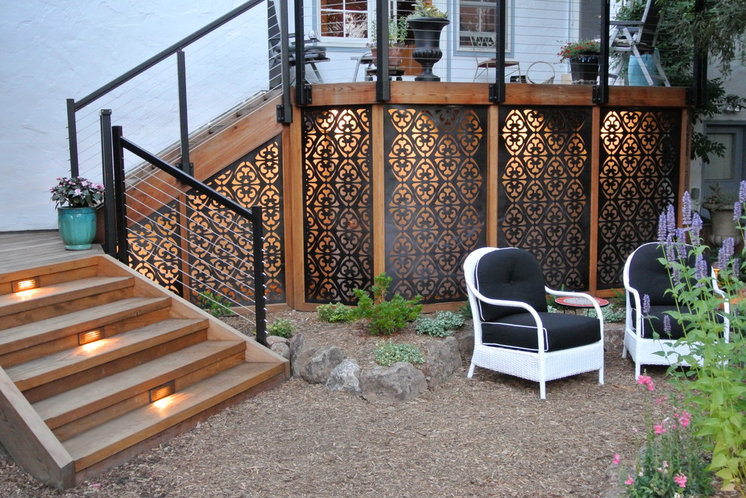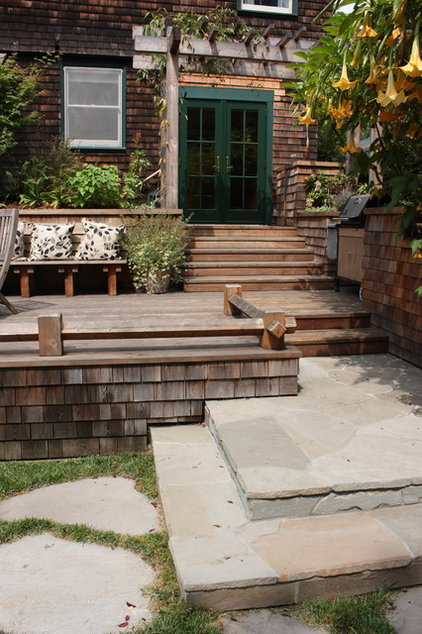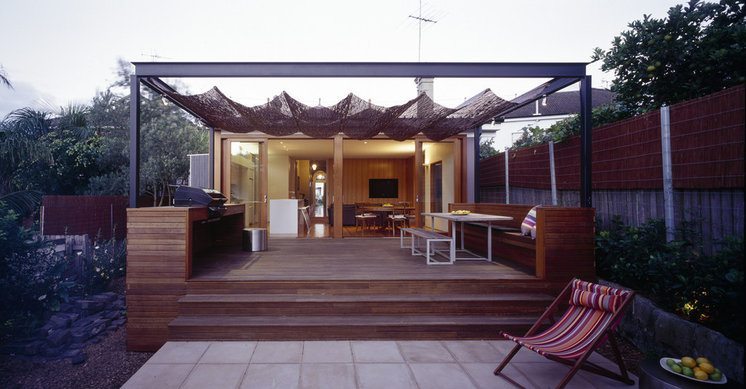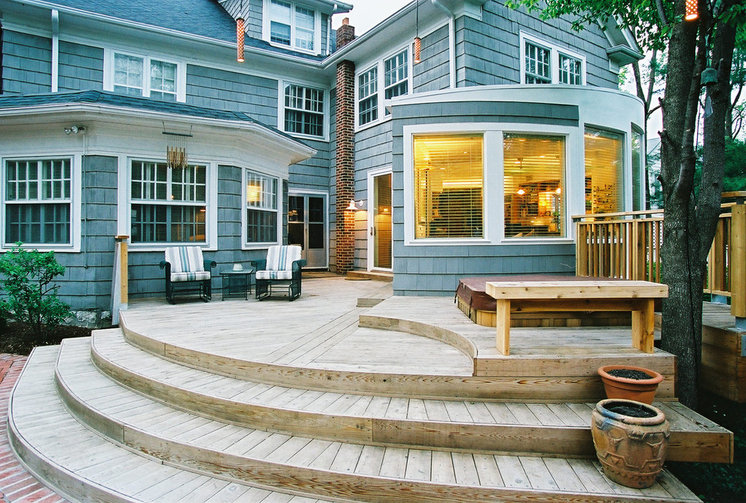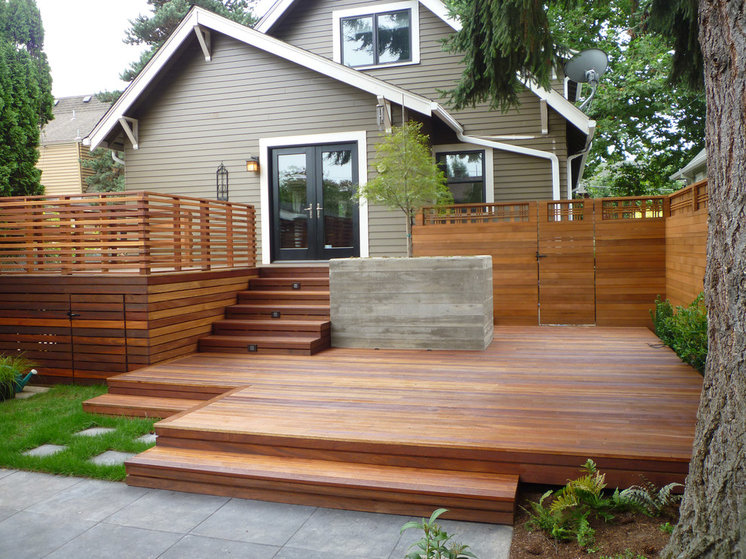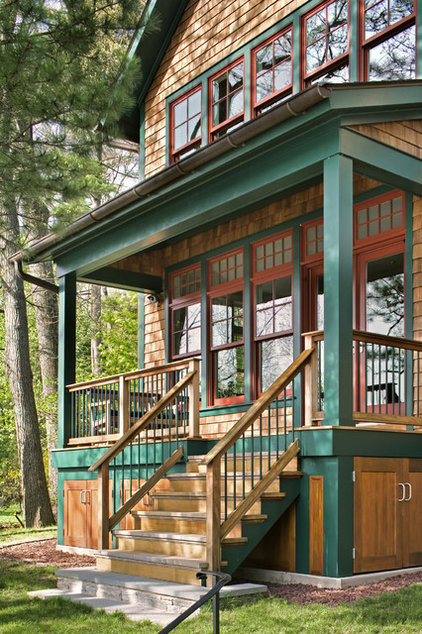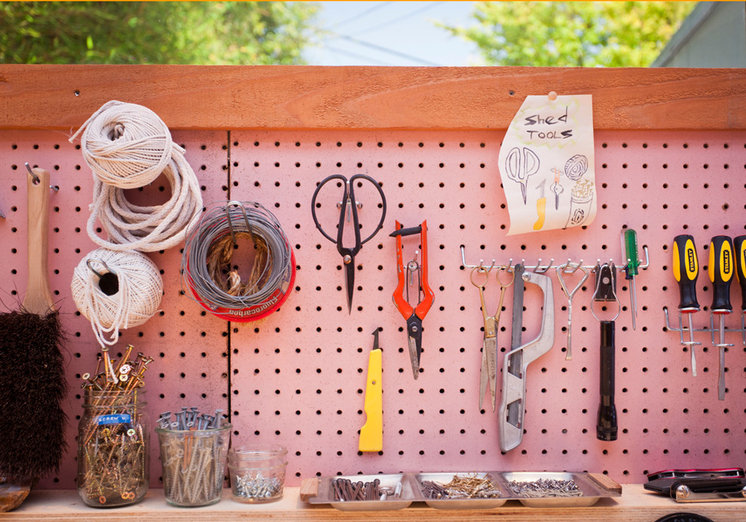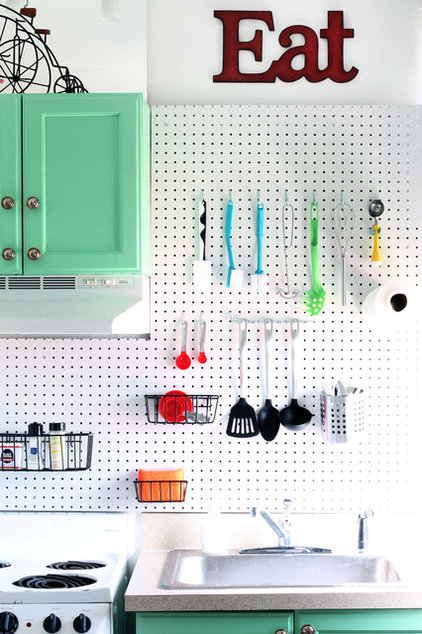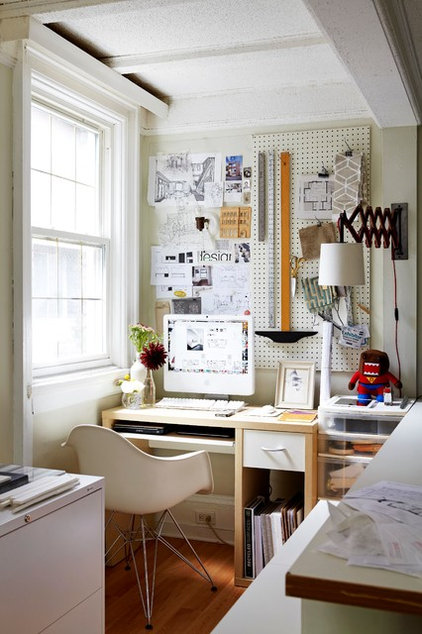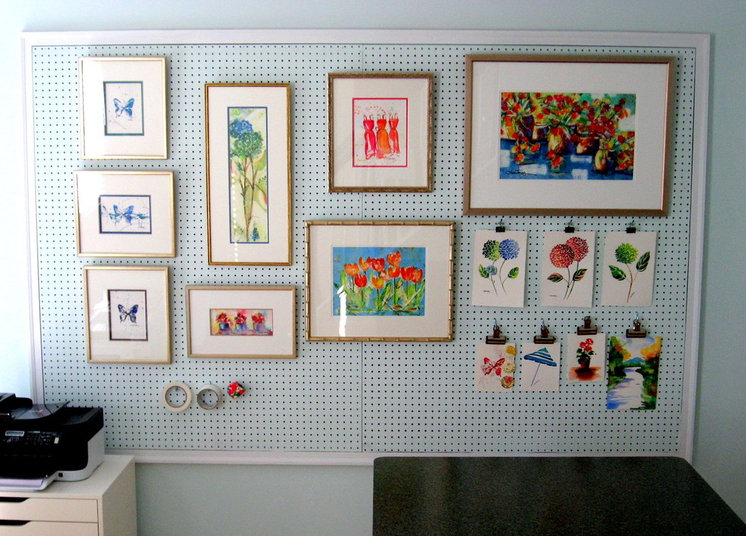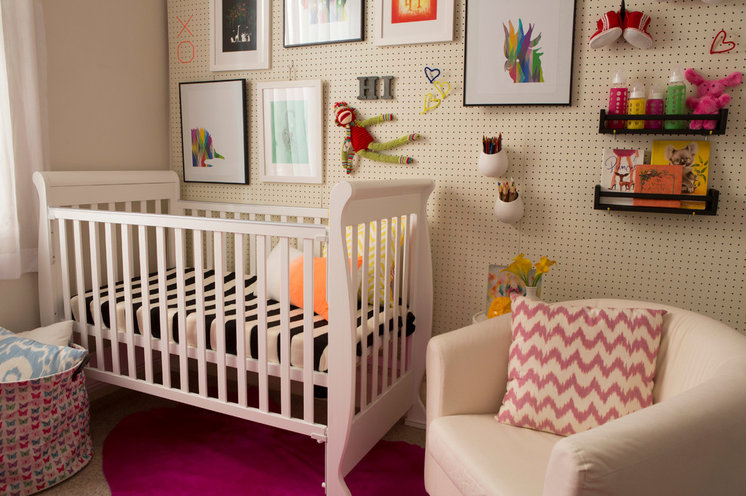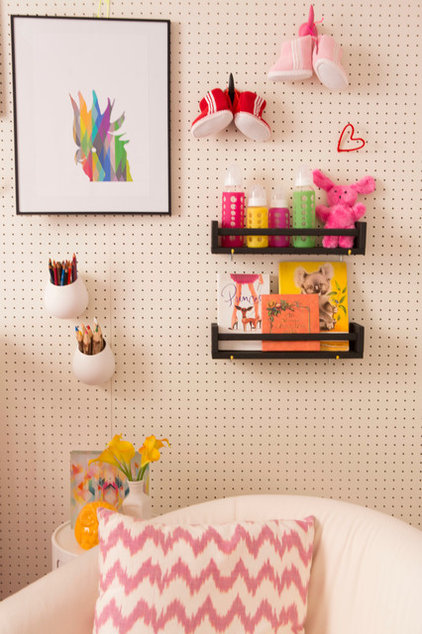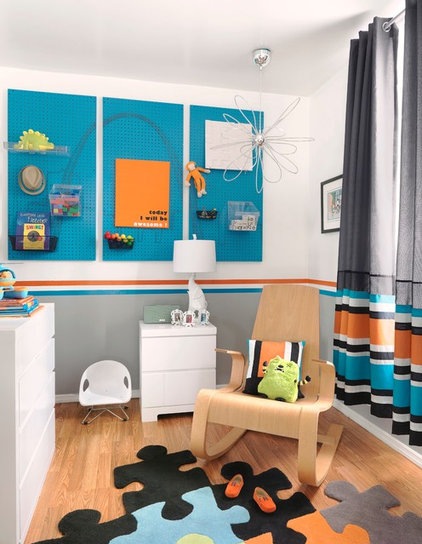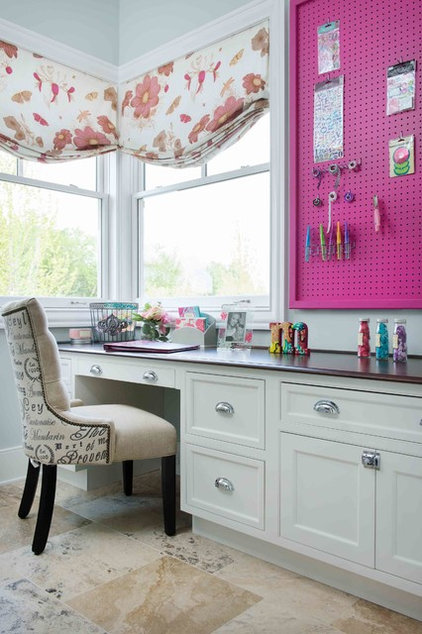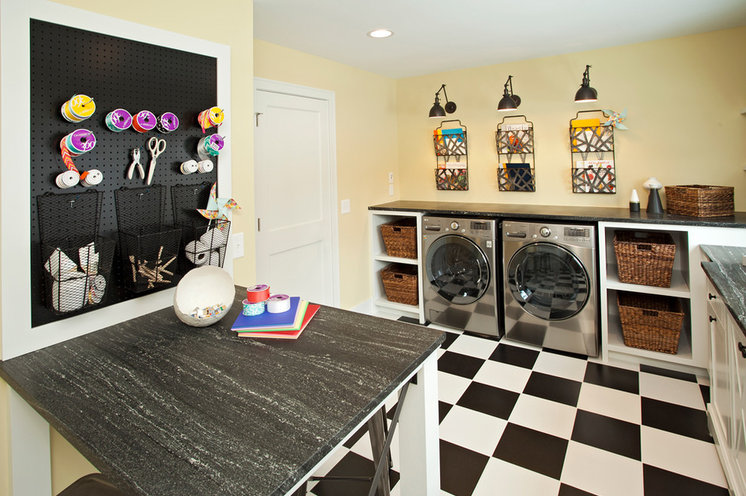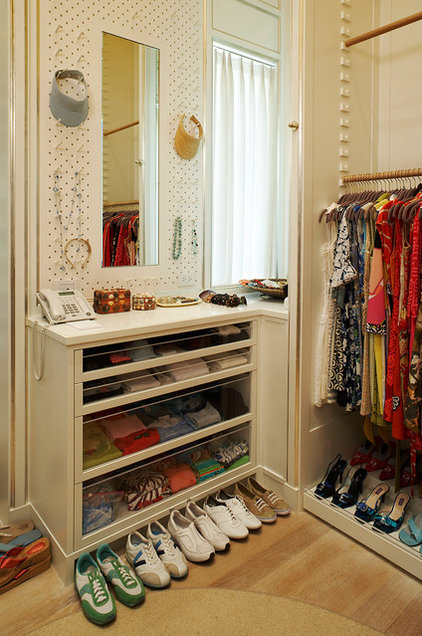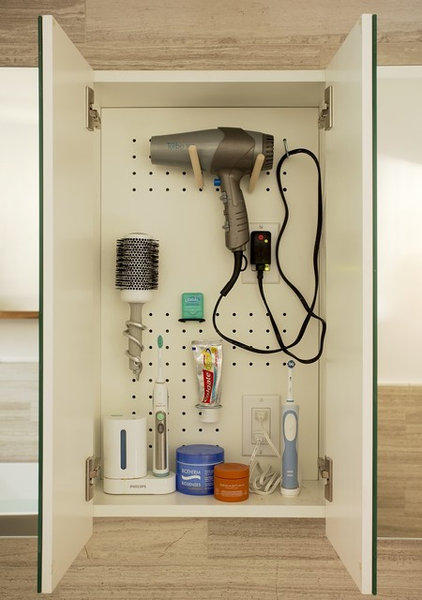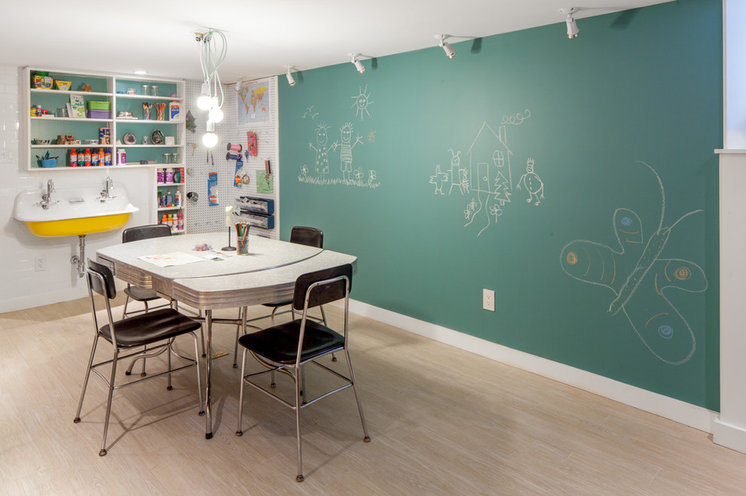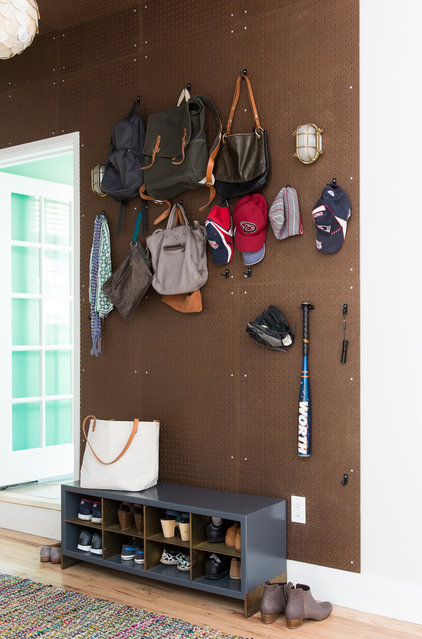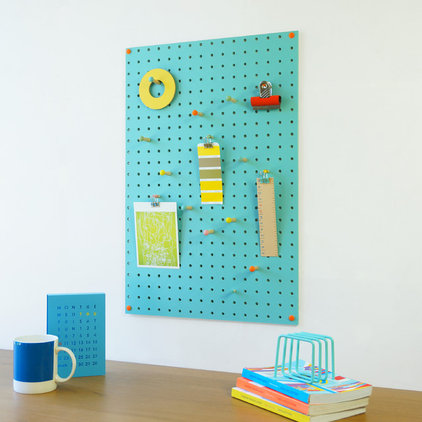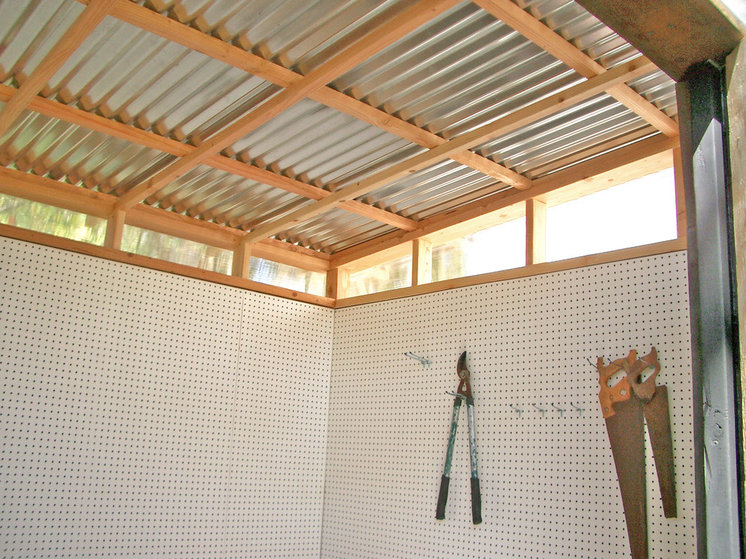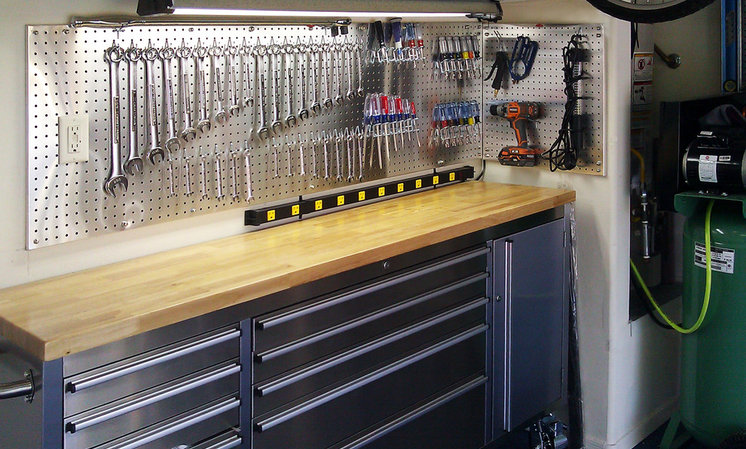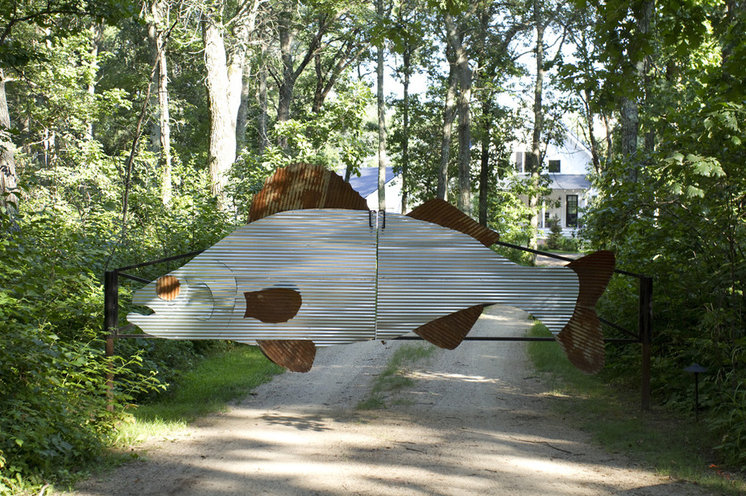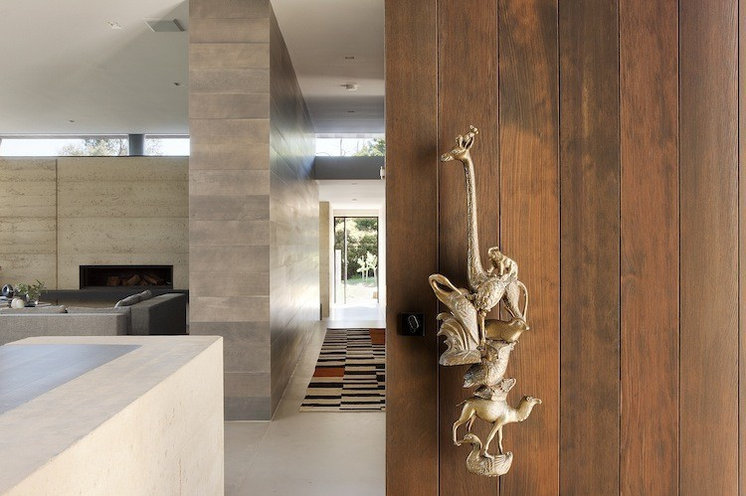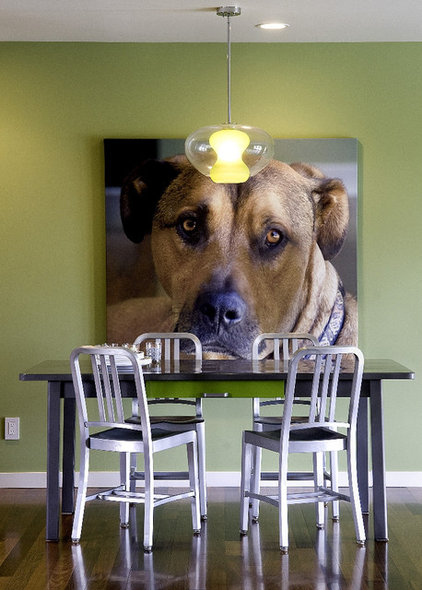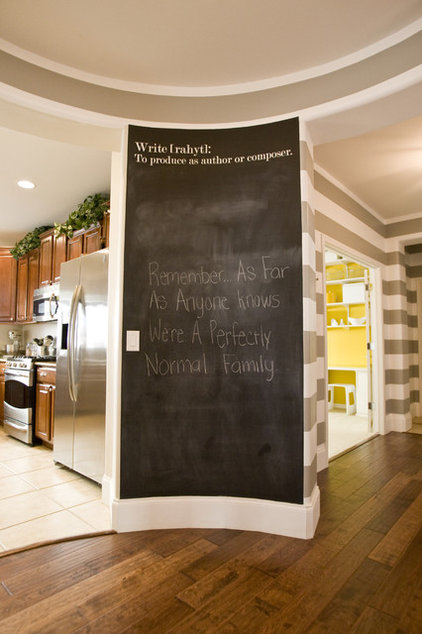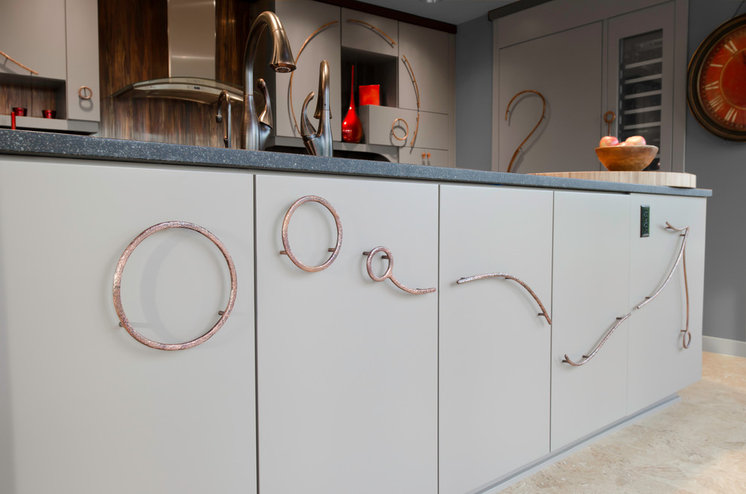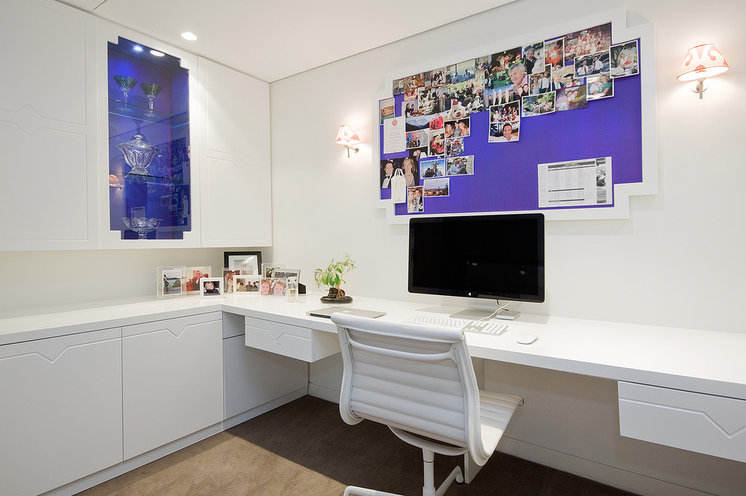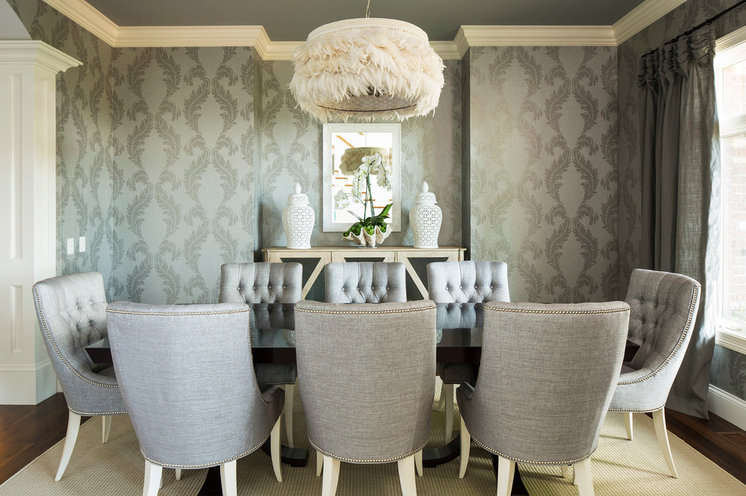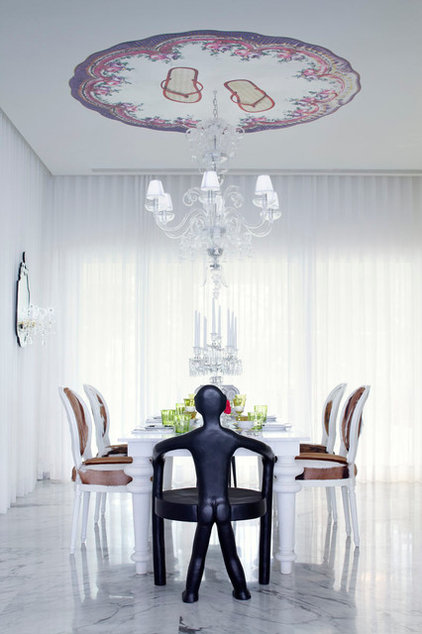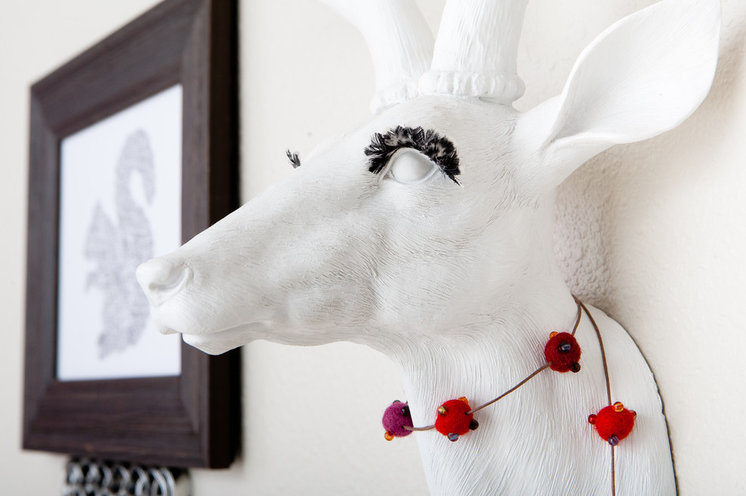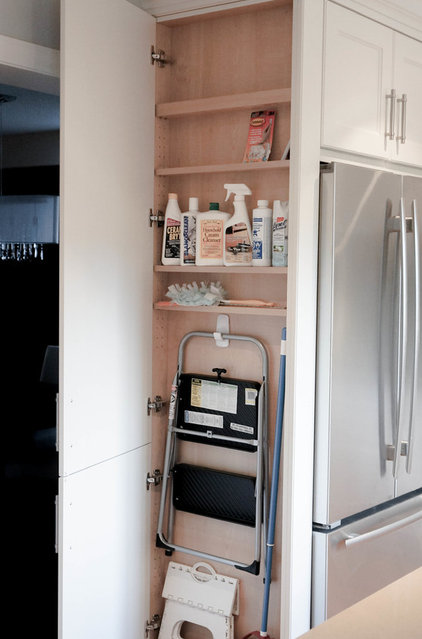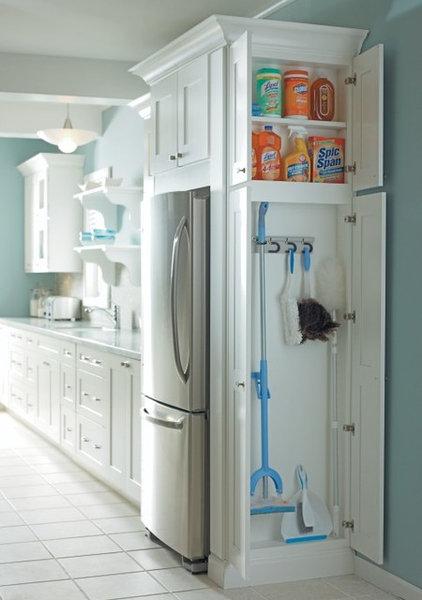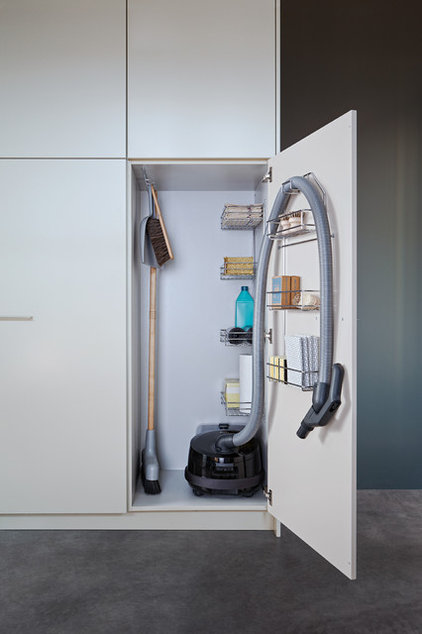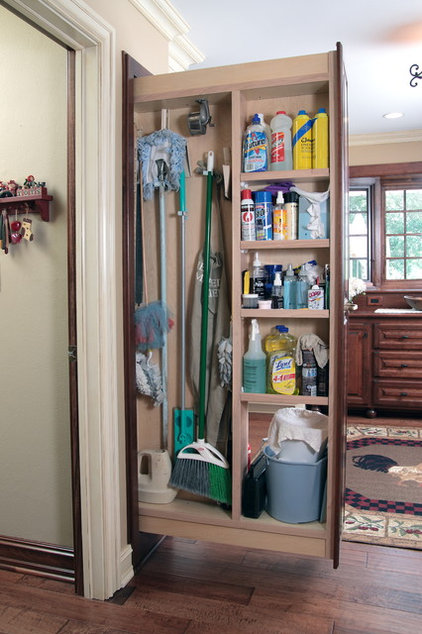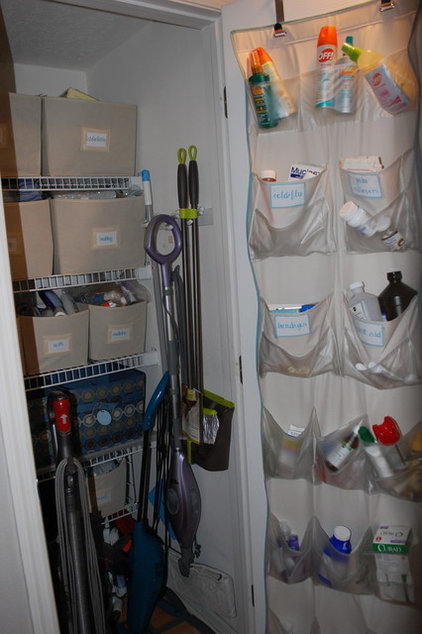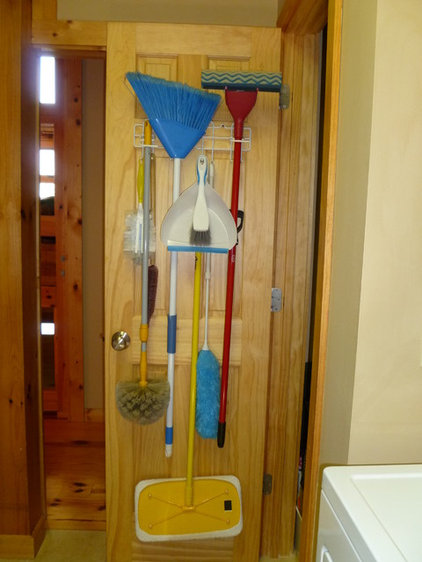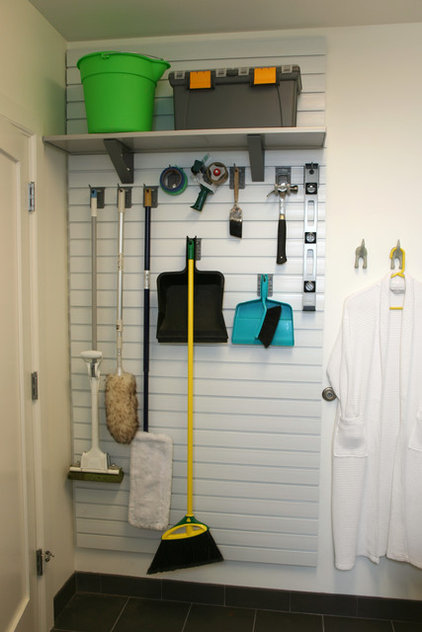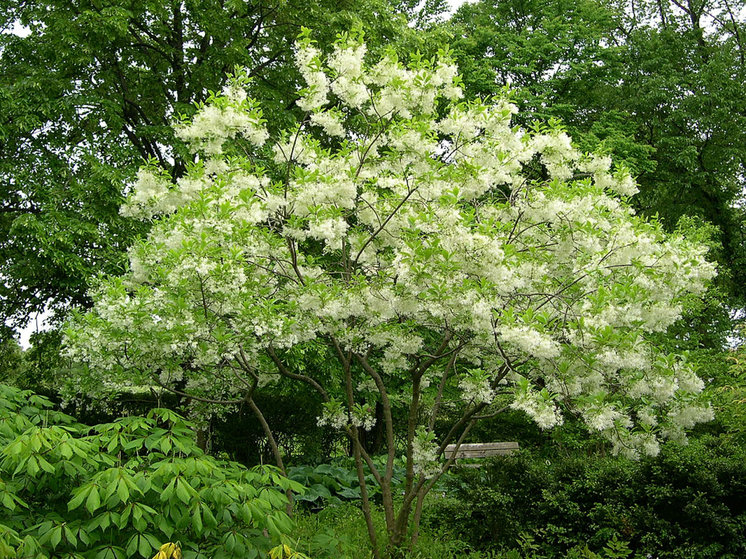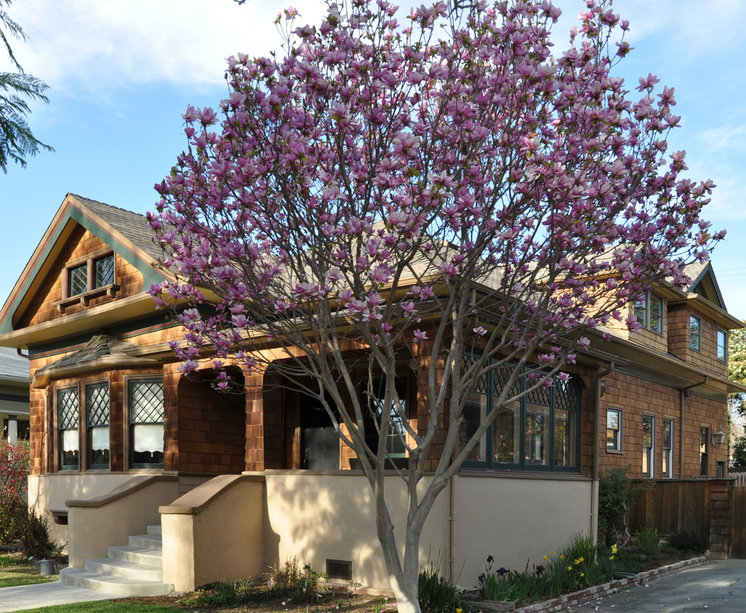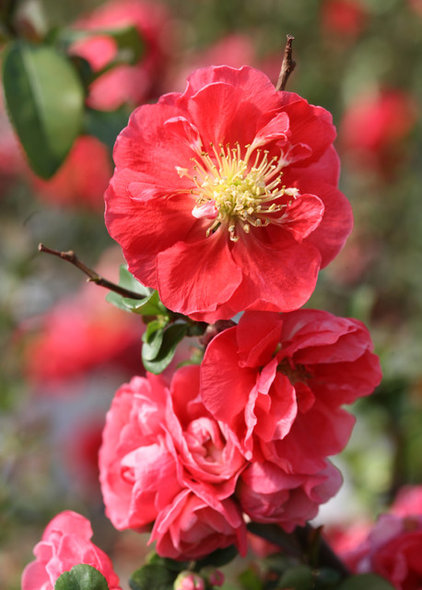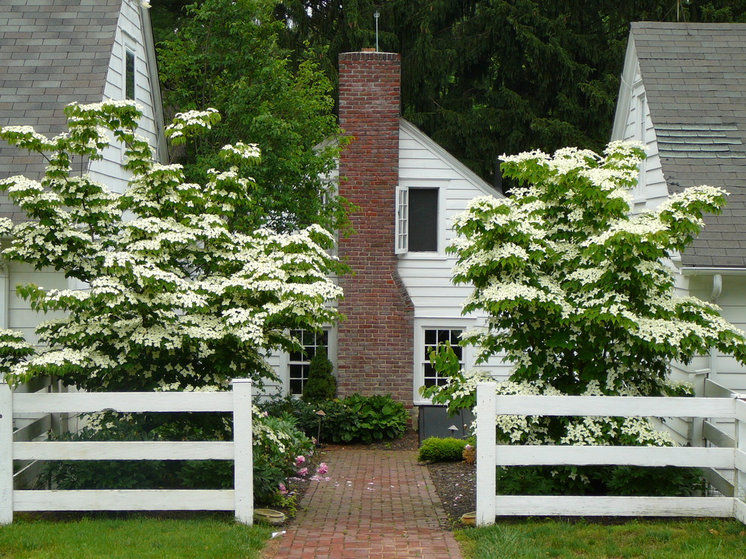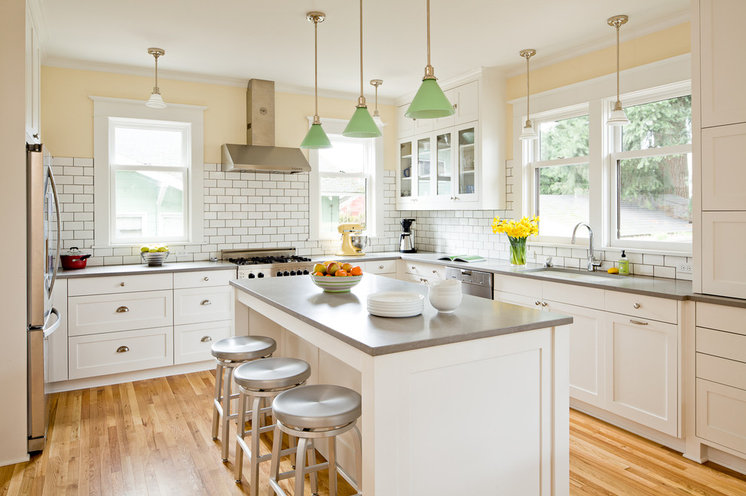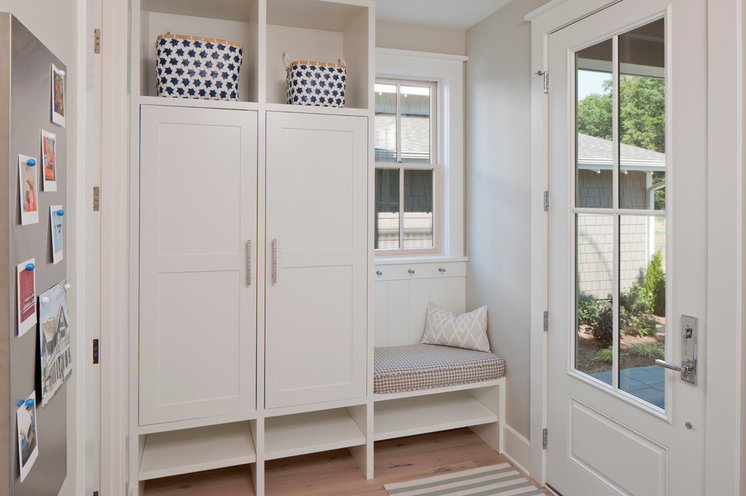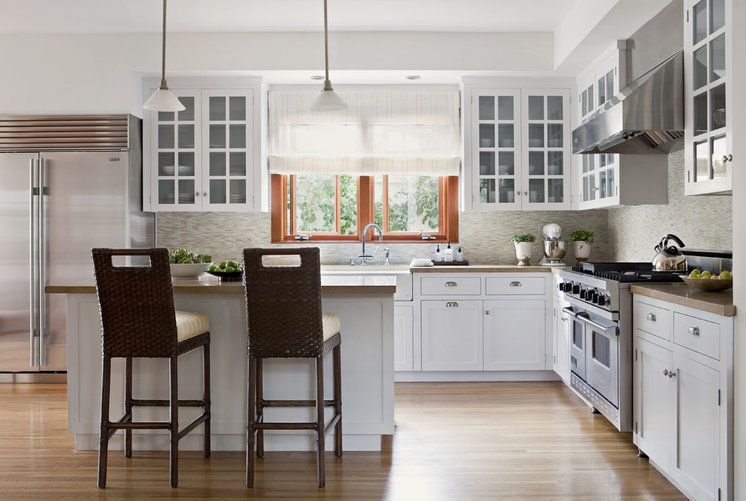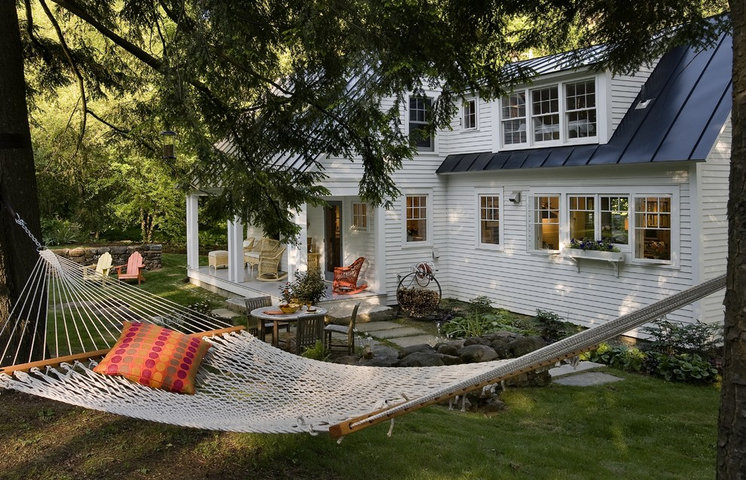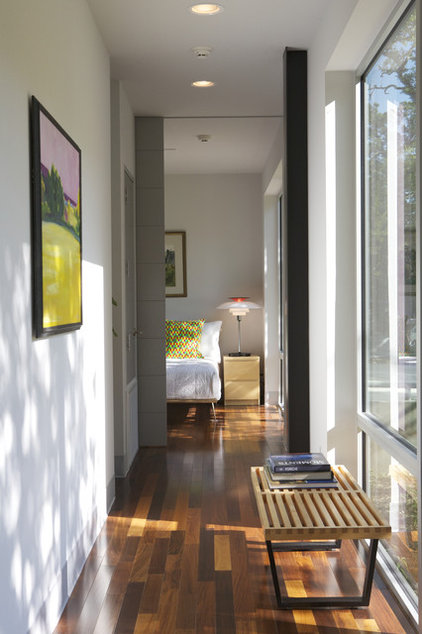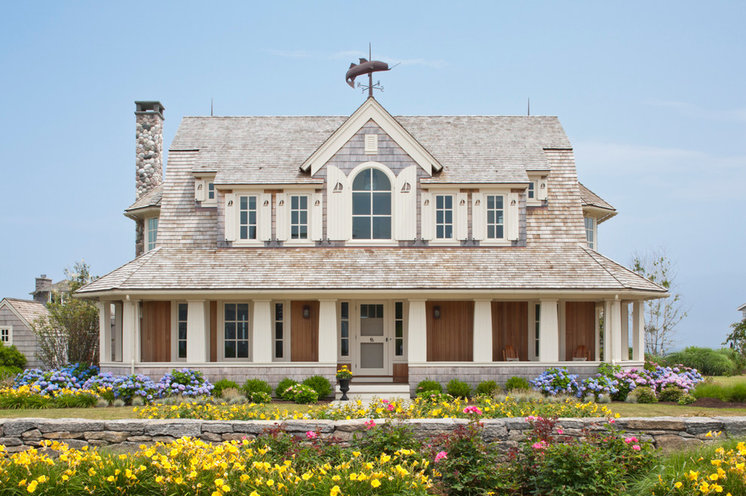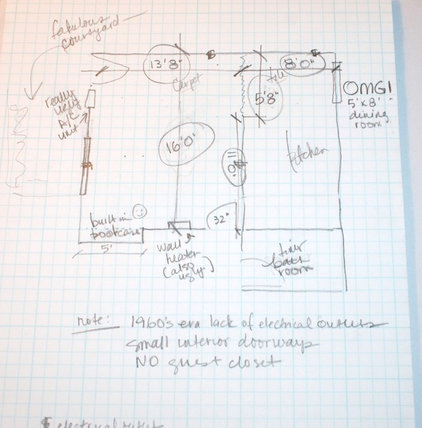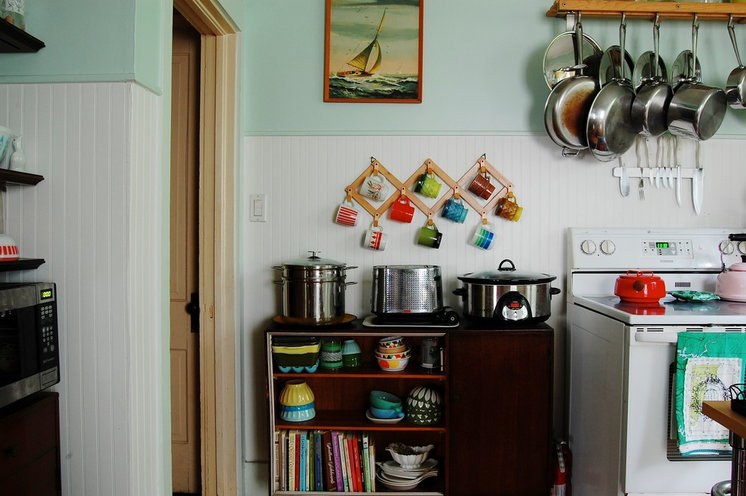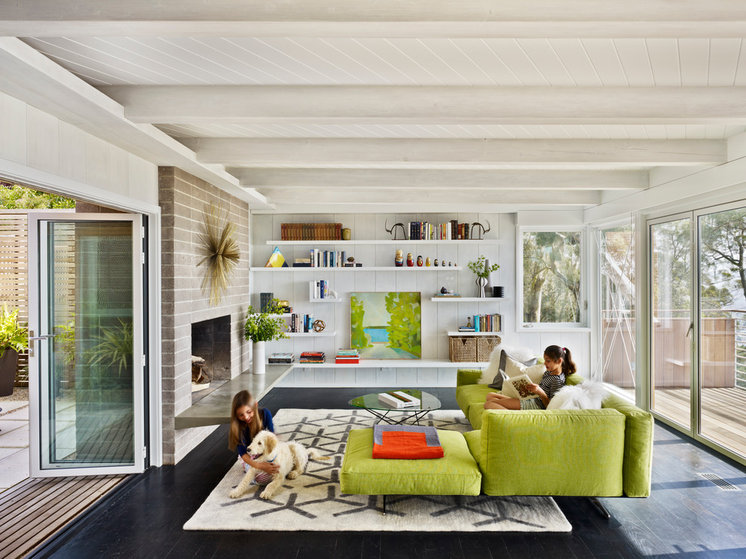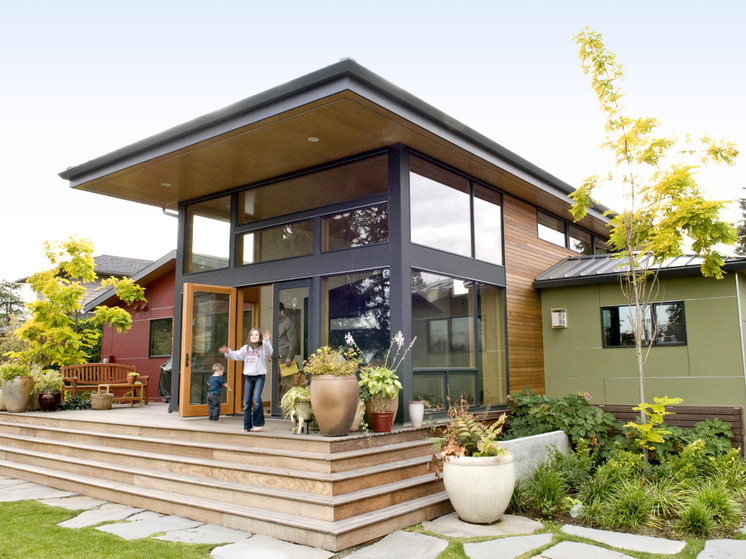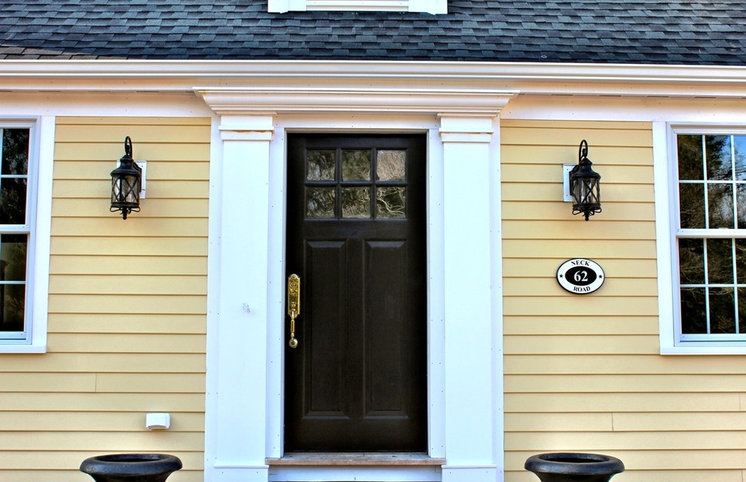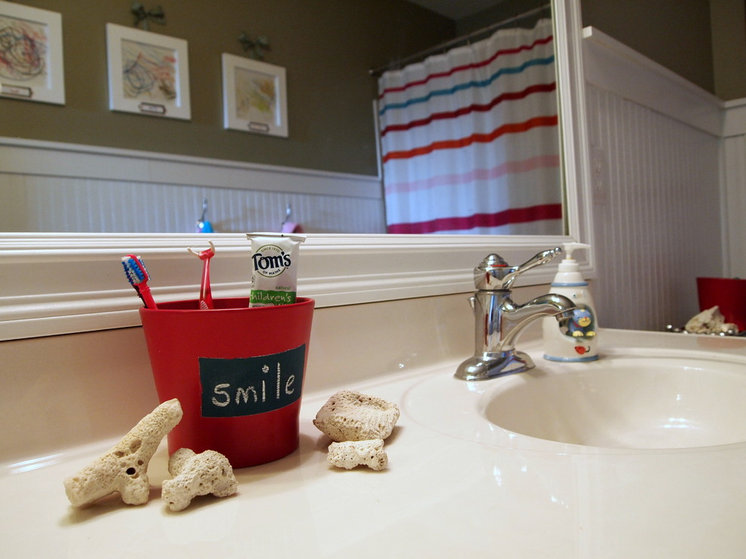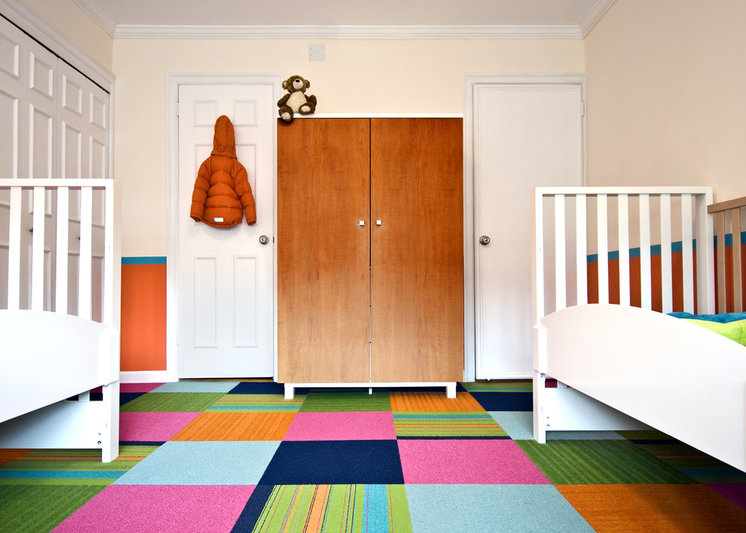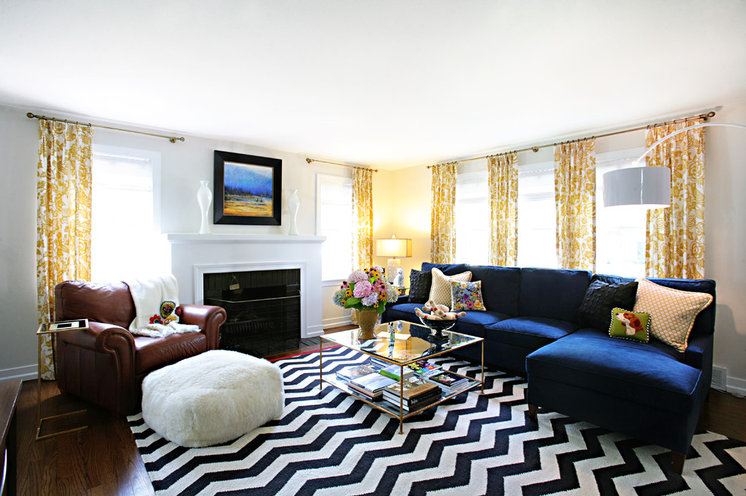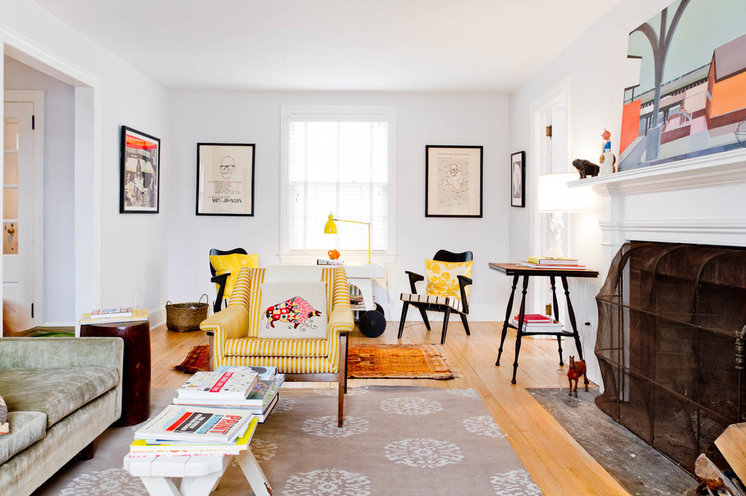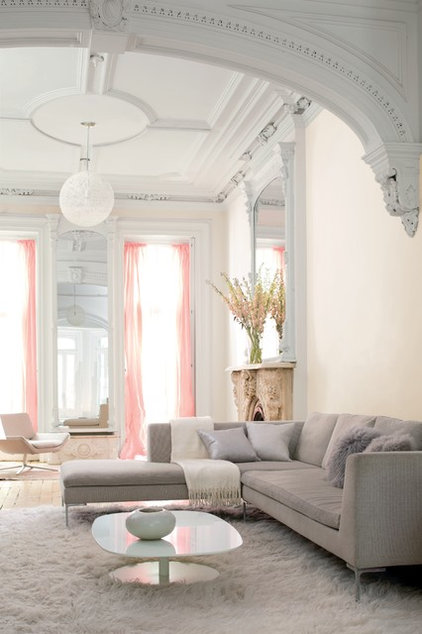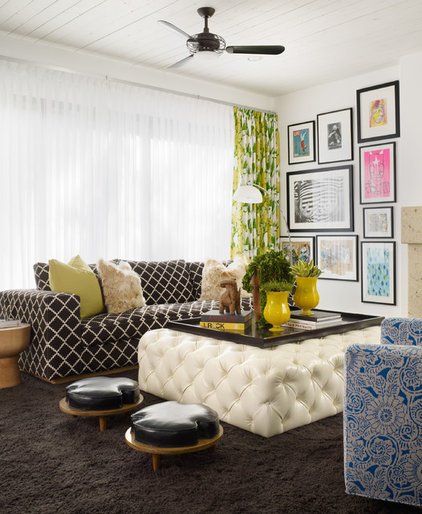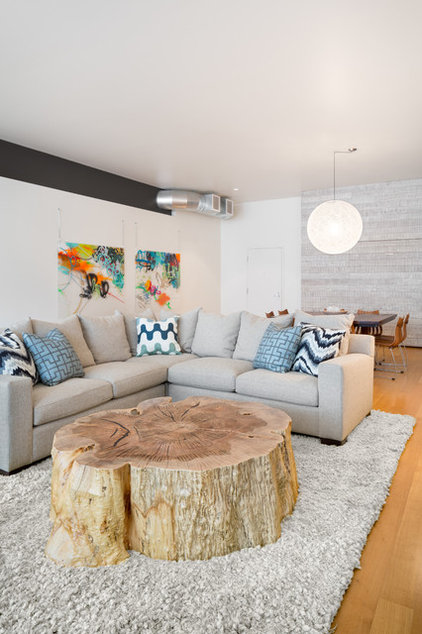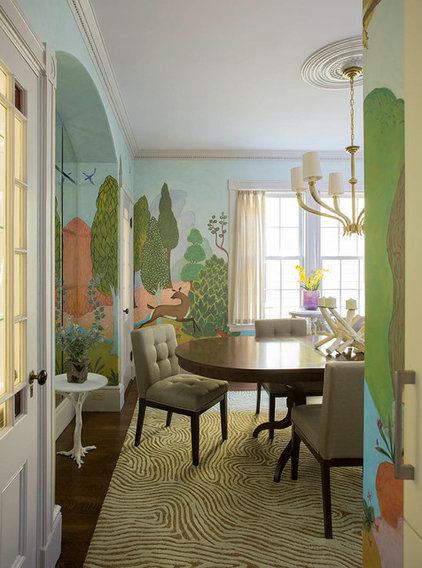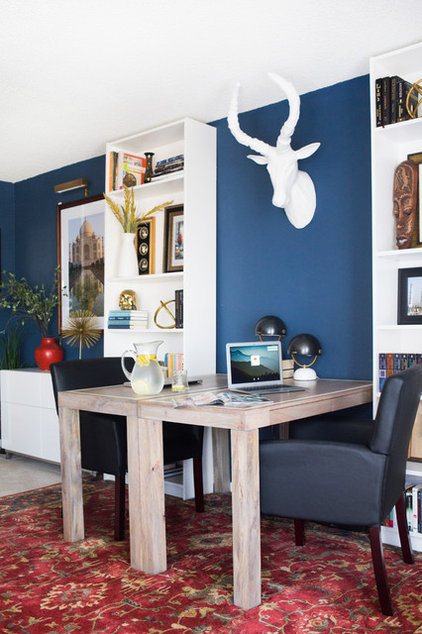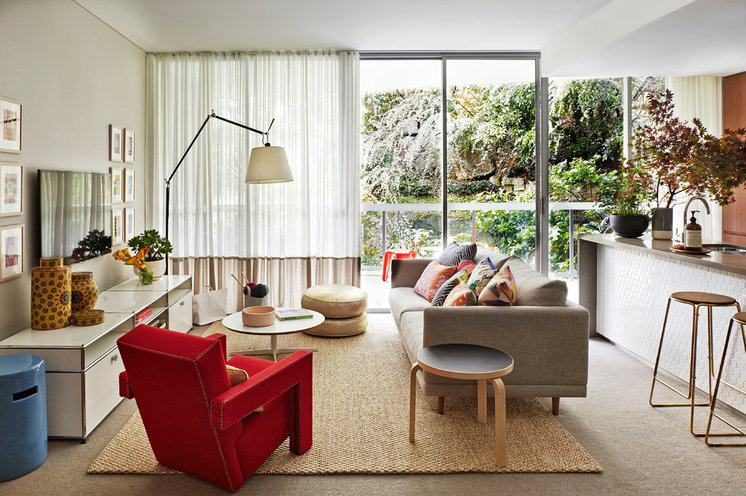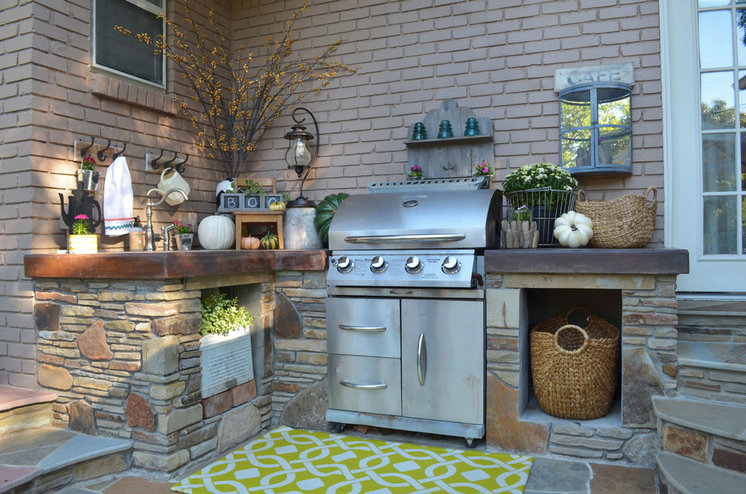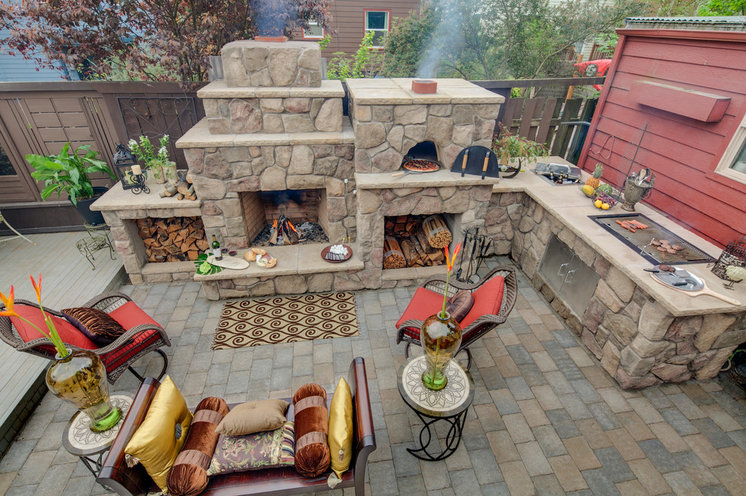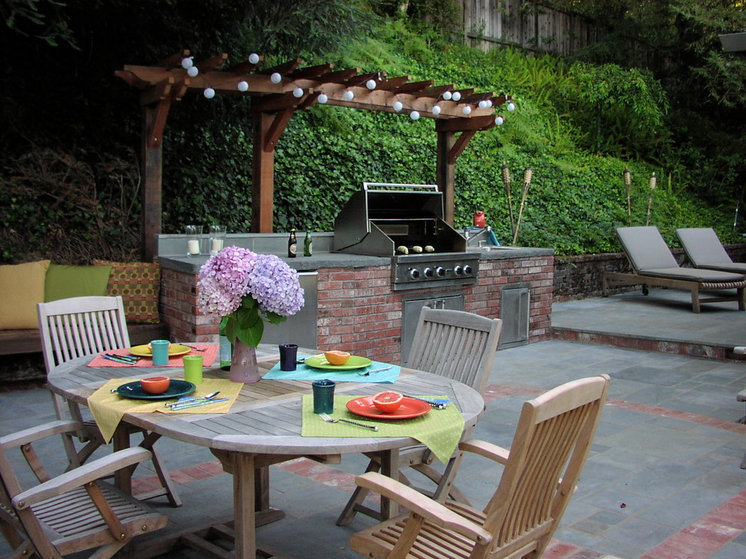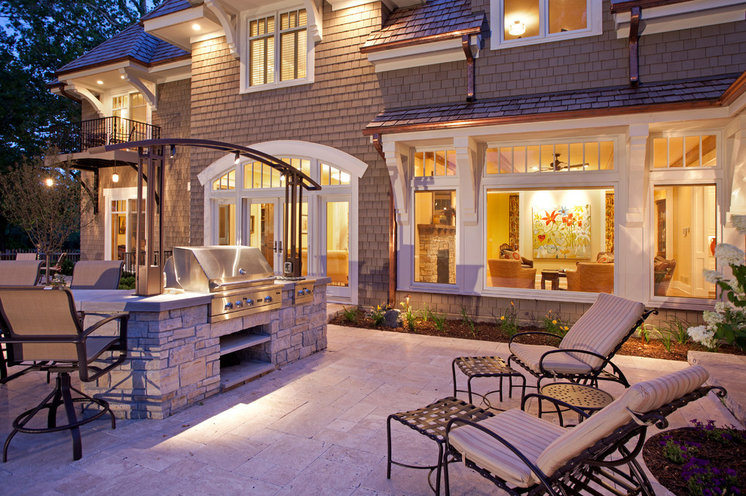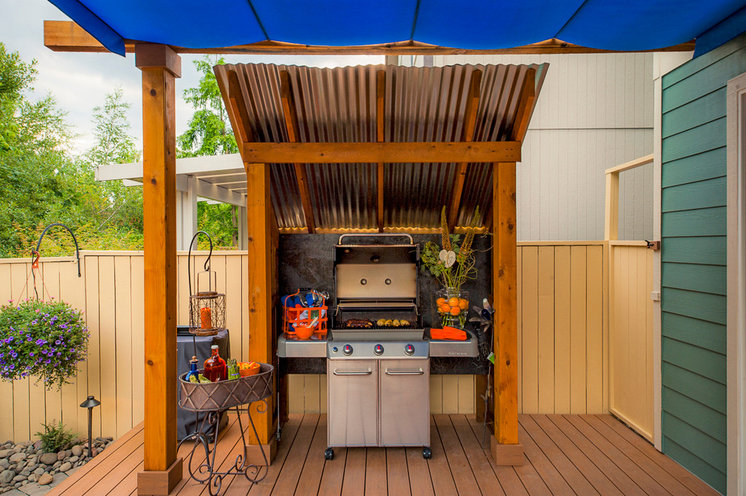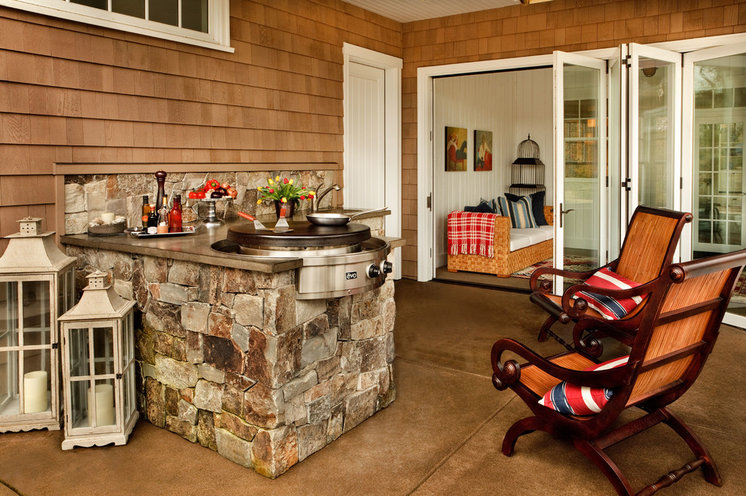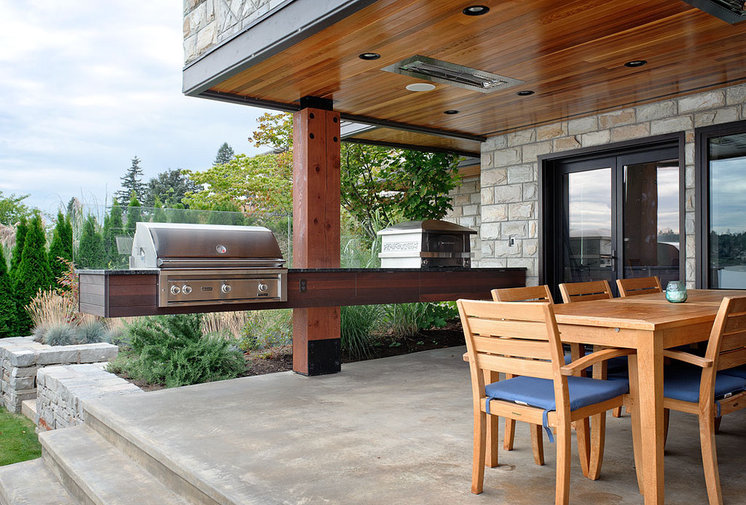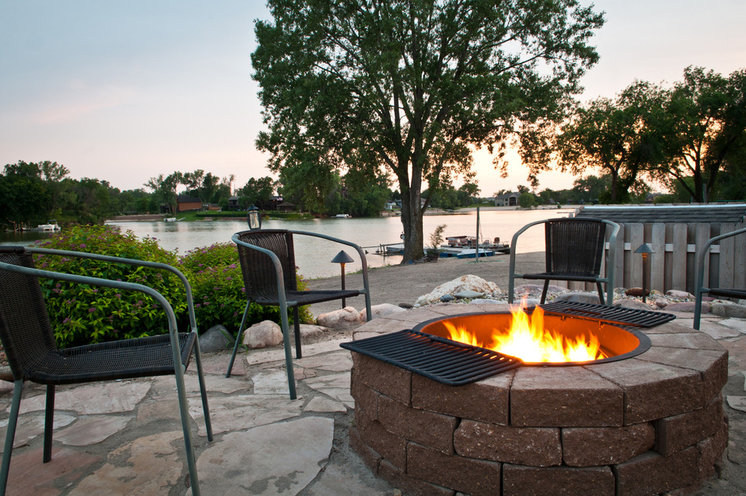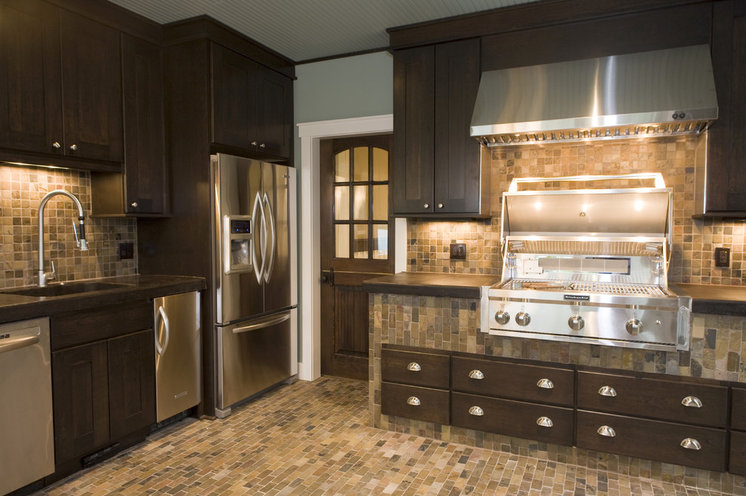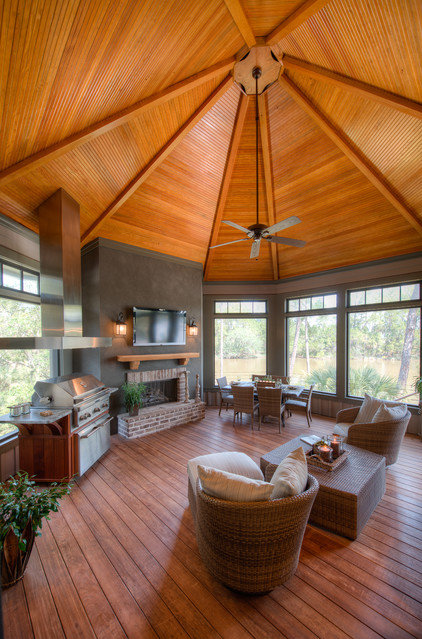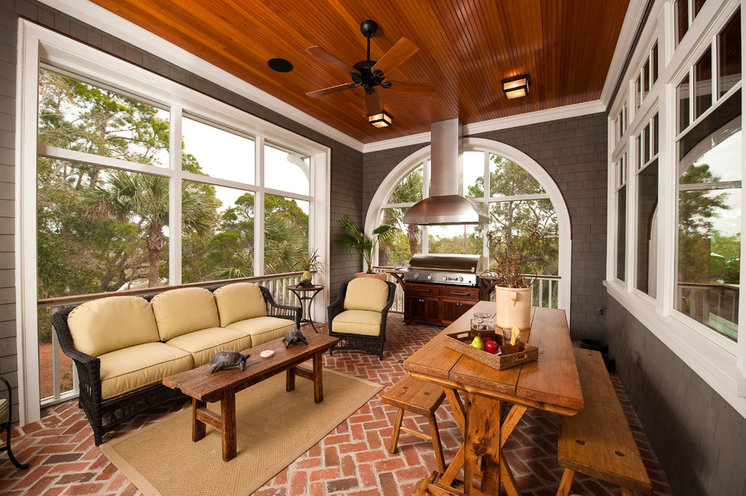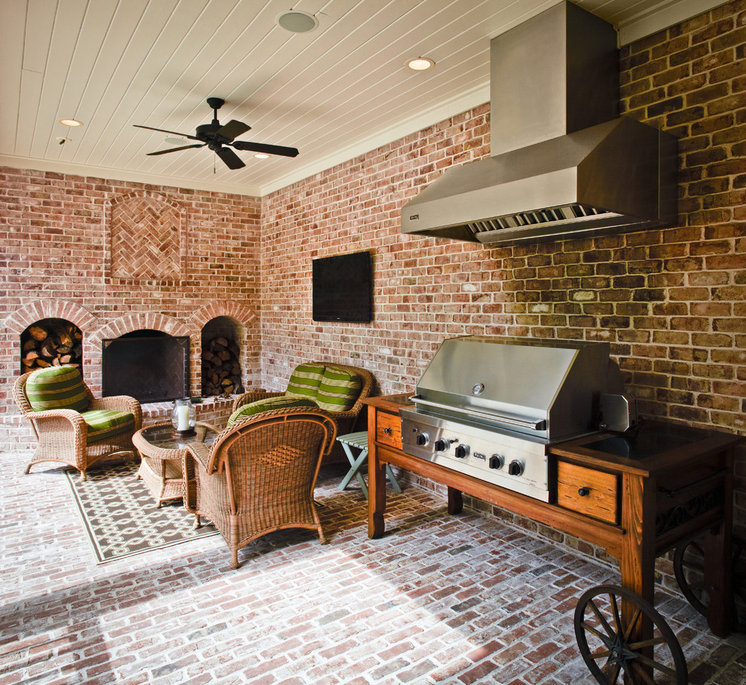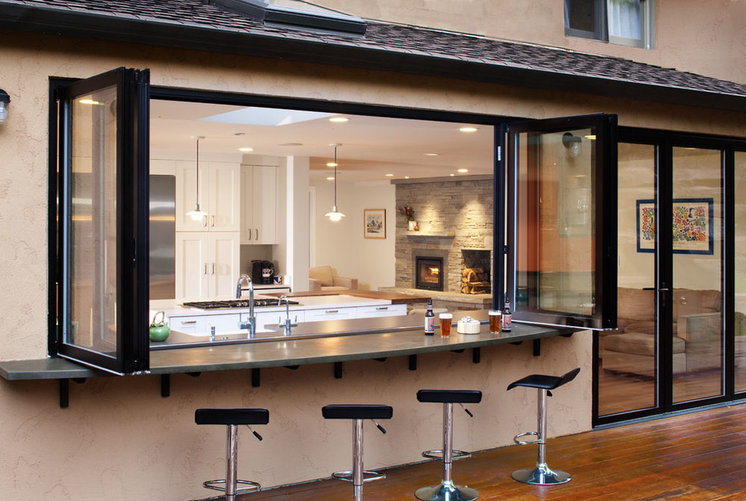Daybed: Case Study Day Bed, Modernica
Tag Archives: Home Repairs
Gap Under the Deck: Hide It or Use It!
So how do you maximize this awkward space? Whether you want to completely hide this area, create a semiprivate screen or turn it into storage, here are six ideas to help transform what’s often a landscape eyesore into a landscape feature.
Tip: Be sure to include some evergreens so there will be screening year-round. Agaves surround this Australian deck.
Tip: It’s standard that a deck 30 inches or more above grade level must have a railing at least 36 inches tall. Be sure to check your local building codes.
Tip: Use materials that match the style of your home. Here wood shingles on the side of the deck mimic the wood shingles on the home. Matching materials is a great way to create a cohesive look between your home and its surrounding landscape features.
Tip: Even if your deck is only 2 or 3 feet off the ground, creating a hatch for access to the crawl space is a good idea if you have utilities or pipes that run under your deck.
Regardless of the size of the space under your deck and stairs, there’s a creative solution for every situation that will suit not only your needs but also the style of your home and garden.
Pegboard Ideas for Your Whole House
Safety note: Be sure to keep the objects out of the reach of tots who are able to pull themselves up to a standing position.
Light: Ikea
Pegboard: PegBoard X2 in stainless steel
Have More Fun Decorating Your Home
There is plenty of anecdotal evidence to suggest that physical, emotional and social blessings flow from looking at life in a lighthearted way. Today’s world is not always easy to come to grips with, but at least we can give one small patch of it a warm and happy glow. Our homes are not only about beautiful design; they are about us and about how we live. Here are some ways to enhance your lifestyle and your home through the best medicine of all.
A giant fish as a welcomer says, “Sense of humor ahead.” Corrugated iron is a popular material for gate art — it is relatively cheap and develops rusty battered charm as it weathers. Can you see EE I EE I O Sid the Sheep, handmade from 44-gallon drums, as a guardian for your gate?
The blissed-out elephant on the shower curtain here (reflected in the mirror) is sure to cause bath-time giggles for water babies of all ages. Just looking at it makes me want to splash and sing.
This family has put a giant photo where it’s impossible to miss the gorgeous, funny face and beautiful brown eyes. Most print shops will make stretched canvas prints of your photos.
Make a place where everyone is free to express his or her inner comedian, such as a giant pegboard or a wall, tabletop or kitchen cupboard door painted with chalkboard paint. Chalkboard paint isn’t just black anymore — it comes in all kinds of colors, and you can even make your own.
See how to make chalkboard board paint in your favorite color
These custom-made copper cabinet handles add a frivolous touch to the kitchen — the arrow on the end is pointing out the wine refrigerator. I recently splurged on two bronze kitchen cabinet drawer knobs in the shape of brussels sprouts, which have caused much commenting and mirth.
An original mind with a great sense of humor saw the potential in an old ship’s porthole and gave the family cat, Gobi, a witty way to go in and out. A friend of mine has adorned her cat door with a gorgeous over-the-top picture frame — fitting for her uppity cat.
Get Your Broom Closet Just Right
Hardworking space: The broom closet.
The challenge: This compact space has a very specific purpose: storing the tools you need to get household jobs done. But with brooms, mops and unwieldy vacuum hoses tumbling out, and a jumble of cleaning products in the way, what should be quick and easy can be a real headache. These tips will help you choose the right spot for storing housekeeping necessities and organize them well.
Good to know: If you’re having trouble fitting all of your cleaning tools and supplies in the kitchen, consider spreading out. Put the big vacuum in another closet and store only the broom and dustpan or a slim stick vacuum in the kitchen cupboard.
Why: The appeal of a shallow cupboard for storing brooms and cleaning supplies is that everything can be easily reached, which means no tumbling bottles!
Planning tips: If you are planning a kitchen remodel, it’s ideal to figure out which cleaning tools and products you need to store beforedeciding on a broom cupboard. If the only tools that need storing are a broom and a basic mop, you may be able to do a broom cupboard as shallow as 6 inches deep. Even a very shallow cabinet can hold a broom, a stepladder and essential cleaning supplies, as shown here. If you have a stick vacuum or bulky mop, you may require 12 or 16 inches.
Layout tip: The area beside the refrigerator is a good place to look for a few extra inches of space for your slim broom cupboard.
Cost: Starting at around $100 (plus installation) for a no-frills Ikea model; $500 and up for finer finishes and better materials; more for a custom design. Be aware that most professional kitchen designers will do a piece like this only as part of a larger job — and estimating the cost of one component can be complicated.
Why: If you have the space, a tall cabinet with a partition in the center is a great way to store a lot while keeping everything in its place — vacuums and sweepers on one side, cleaning products on the other.
Extras: A tall, slim basket unit with pullout drawers is a good way to organize supplies. Install a few hooks in the cabinet or on the inside of the cabinet doors to hang a step stool, dusters and other tools. If you use a cordless stick vacuum, having an outlet installed inside the cabinet will make it easy to charge it between uses.
Cost: Around $550 to $1,500 for a tall cabinet with a single partition; more for a custom design. If you want to add an electrical outlet inside the cabinet, you may need a permit. Wall-mounted basket units and vacuum hose guides cost around $10 and up each; a basket unit with pullout drawers costs $100 and up.
Why: To take advantage of a narrow but deep space in your kitchen.
Hardworking details: A space accessible from both sides is handy for stowing a small garbage can or recycling bin. Choose adjustable shelving whenever possible, since this will allow you to get just the right shelf height for what you’re storing. And if you really don’t want to let an inch go to waste, use the inside top of the cabinet to install an old-fashioned pencil sharpener — look closely and you can see one here.
Cost: From around $250 plus installation for a basic ready-made pullout cabinet from Ikea; more for a solid wood or custom design.
How: Houzz user Kara Gilbert sent in this photo of her organized broom closet with a shoe rack on the back of the door — perfect when you need to make a closet work as hard as possible. The shoe rack holds first-aid supplies and toiletries in labeled pouches, while bins on open shelving provide ample storage. A small wall-mounted holder keeps cleaning tools out of the way, and a vacuum with a small footprint sits on the floor.
Why: If you have the luxury of more space for storing cleaning tools and supplies, make sure it’s put to good use by installing a versatile wall-mounted storage system that can handle anything from mops to hammers.
How: Choose from ready-made wall storage systems, like the one shown here, which can be customized with shelving, baskets and other features. Or craft a DIY version using basic pegboard from the hardware store and outfit it with hooks and baskets.
Cost: Wall storage systems can cost from $200 to $600 (and up), depending on size and features. You can install a pegboard for $100 or less, using materials from the hardware store and your own labor.
7 Deer-Resistant Flowering Trees
(Chionanthus spp.)Fringe trees aren’t a household name, but they should be. The dainty, fringy flowers appear in early spring, just as the leaves unfurl. They’re quite shade-tolerant and are commonly planted as an understory specimen in a shade garden, where they really light up the space when in bloom. They will also tolerate full sun.
The Chinese fringetree (C. retusus) is particularly deer-resistant, though the Eastern U.S. native white fringetree (C. virginicus) is also a worthwhile choice where deer are an issue.
Where it will grow: Hardy to -20 degrees Fahrenheit (USDA zones 5 to 9; find your zone)
Light requirement: Shade-tolerant but will also tolerate full sun
Water requirement: High
Mature size: 15 to 20 feet tall and wide
(Lagerstroemia indica)Crape myrtles are one of the most popular flowering trees in warm climates. They have smooth, exfoliating bark and their brightly colored, paper-textured flowers make a stunning midsummer display — few trees flower for as long as crape myrtles. These sun lovers are tough, easy to grow and quite unpalatable to deer.
Many varieties of crape myrtle are available with different flower colors and sizes. Shades of pink, purple and white are most common, and sizes range from 18-inch dwarves to 40-foot giants.
Where it will grow: Hardy to 0 degrees Fahrenheit (zones 7 to 9)
Light requirement: Full sun
Water requirement: Moderate
Mature size: Varies by species
(Magnolia x soulangeana)With their delicate pink blush and teacup size, the flowers of saucer magnolia are a real head-turner when they emerge on the tree’s bare, gray branches in late winter. Despite their delicate appearance, these flowers are fairly resistant to deer damage. Plant these small- to medium-sized trees in full sun in a fertile bed of topsoil to encourage good health and abundant flowering. Saucer magnolias grow slowly to 20 or 25 feet, though there are related magnolia varieties, such as M. ‘Ann’, that stay under 10 feet tall when mature.
Most magnolias are quite deer-resistant, so you can also consider star magnolias (M. stellata), with large, white, star-shaped flowers; southern magnolias (M. grandiflora), with white, cup-shaped flowers on a large evergreen tree; and many others. Saucer magnolias are hardy in zones 5 to 9, but some magnolia varieties survive down to Zone 3.
Where it will grow: Hardy to -20 degrees Fahrenheit (zones 5 to 9)
Light requirement: Full sun
Water requirement: Moderate, but prefers moist, fertile soil
Mature size: 20 to 25 feet tall
(Amelanchier spp.)Serviceberries are native throughout North America and are known for their delicious blueberry-like fruit, as well as the profusion of white flowers that appear when the trees break from dormancy in early spring. They tolerate partial shade to full sun.
There are numerous species of serviceberry, all of which show good deer resistance. They are a popular choice in cold climates; one species, commonly referred to as a Saskatoon (A. alnifolia), is hardy all the way down to Zone 2. The same species can be suitable all the way up to Zone 10, making it one of the most widely adapted flowering trees. The cold- hardiness of other serviceberry species falls somewhere in between. Most varieties grow about 15 to 20 feet tall, though the downy serviceberry (A. arborea) grows up to 40 feet.
Where it will grow: Hardy to -50 degrees Fahrenheit (zones 2 to 9), depending on species
Light requirement: Varies by species
Water requirement: Varies by species
Mature size: Varies by species
(Chaenomeles spp.)This type of quince is known for its spring flower display, not for its fruit.The flowers are most often seen in shades of pink or red, but white cultivars are also available. Flowering quince is a true dwarf that rarely grows more than 6 feet tall and wide. The variety pictured here is called ‘Pink Storm’.
Where it will grow: Hardy to -20 degrees Fahrenheit (zones 5 to 9)
Light requirement: Full sun
Water requirement: Moderate to regular
Mature size: 6 feet tall and wide, depending on species
(Crataegus spp.)There are many species of hawthorn available, and on the whole they are tough, adaptable trees, tolerating both wet and dry sites. The white flowers are often tinged with pink, like an apple blossom. They are, in fact, closely related to apple trees and produce a small crabapple-like fruit that is edible but usually very bitter.
Hawthorns vary in size, but most are in the range of 15 to 30 feet tall and wide. They are cold-hardy trees, with some species growing as far north as Zone 3. Other hawthorns tolerate warmer regions up to Zone 9. ‘Winter King’, the variety pictured here, is hardy in zones 4 to 7.
Where it will grow: Varies by species
Light requirement: Full sun
Water requirement: Moderate
Mature size: 15 to 30 feet tall and wide, depending on species
(Cornus kousa)Chinese dogwood is absolutely covered in white flowers in spring. It is also known for its ornate shape and 1-inch red berries that ripen in summer (they’re edible but bland).
Where it will grow: Hardy to -20 degrees Fahrenheit (zones 5 to 8)
Light requirement: Full sun or part shade
Water requirement: Consistent moisture
Mature size: 20 feet tall and 15 feet wide
Guide to Selling Your Home and Moving
Tip: If you need to get a lot of furniture and accessories out of your home while it’s on the market, consider renting a storage unit. It could be worth the expense it if it helps your house show better and sell faster.
Tip: Always ask yourself if you can you find a less expensive fix before committing to a big-ticket item. Can you repaint the cabinets rather than replace them? Clean and polish the wood floors instead of refinishing?
More: Fix It or Not? What to Ask When Prepping Your Home for Sale
Tip: Don’t forget the garage door. If your garage is positioned near the front of your home, any flaws in this area can detract from the overall impression.
More:
10 Low-Cost Tweaks to Help Your Home Sell
10 Ways to Boost Your Home’s Resale Value
Tip: Don’t forget to stage the outdoor areas, too. A shined-up stainless steel grill and a hammock in the backyard help potential buyers imagine enjoying summer weekends hosting barbecues and relaxing.
More:
Sell Your Home Fast: 21 Staging Tips
How to Stage Your Kitchen for a Home Sale
10 Tricks to Help Your Bathroom Sell Your House
Tip: The more flooring that can be seen, the larger the room will appear, so consider removing area rugs before having photos taken.
Tip: For your own security and peace of mind, remember to shut down and password-protect all your computers, and hide small valuables.
More:
Tips for Moving Into a Smaller Space
Downsizing Help: Choosing What Furniture to Leave Behind
More: Home-Buying Checklist: 20 Things to Consider Beyond the Inspection
Tip: Keep a master packing list. Number each box as you pack it and mark the number on all four sides. Instead of listing the contents on each box, write down what’s in each numbered box on your master list. Make things even clearer by color coding boxes with basic label stickers to indicate which room they should go to in the new place.
Tip: Double check that your pets’ tags have the new address and your cell phone number on them.
More:
7 Things to Do Before You Move Into a New House
Relocating? Here’s How to Make Moving In a Breeze
How to Handle Carpet Stains
Blot, don’t scrub. Using a white cloth or ink-free paper towels (to avoid the danger of additional dyes bleeding into the carpet), blot the stain. Avoid using a scrubbing motion, which can cause the spot to spread or work the problem deeper into the carpet fibers. Keep blotting until the area is completely dry.
Scrape. If semisolids are part of the problem, scrape them off the floor carefully with a rounded spoon. Vacuum the solids until they’re completely removed.
Once you have identified a safe cleaning solution, the CRI advises applying a small amount to the stain and letting it sit for about 10 minutes. Next, working from the outside edges of the stain inward, gently blot the spot. Repeat as needed.
To dry, stack a half-inch layer of plain paper towels on the spot and weigh it down with a flat, heavy object (or stand on it). Continue the process, changing paper towels as needed, until the excess water has been absorbed and the carpet is dry.
If you feel the need for speed, the CRI suggests using a dry, absorbent cleaning compound (such as Capture) to accelerate the drying time.
Coffee, tea, cola. One of the CRI’s most recommended methods for cleaning a variety of stains begins with a combination of ¼ teaspoon of liquid dishwashing detergent with 1 cup of lukewarm water. According to the experts, although you may be tempted to add more dish soap, don’t do it. The less soapy residue you have to rinse out at the end, the better.
To create the solution, use a mild dish soap, never a laundry detergent or an automatic dishwashing detergent, since those often contain optical brighteners or bleaching agents, which can harm carpet dyes and fibers.
If the stain is stubborn, follow the dish soap solution with a mixture of 1 cup of white vinegar per 2 cups of water. The CRI says that since white vinegar is a 5 percent acetic acid solution, it acts as a solvent that will work on both the stain and the dish soap residue.
Finally, when it’s time to rinse the area, the CRI advises using lukewarm tap water in a spray bottle.This precaution is aimed at avoiding oversaturating the carpet and harming the layers beneath. Blot with paper towels and pat dry after each rinse. Several rinses may be necessary to thoroughly eliminate the residue.
One DIY method for neutralizing the scent, recommended by the experts at Coit: Mix ½cup of 3 percent hydrogen peroxide with 1 teaspoon of a mild liquid dish soap, and put it in a spray bottle. Then sprinkle one to two handfuls baking soda (depending on the size of the stain) over the area and spray with the soapy solution. Gently massage the dissolving baking soda into the carpet and allow the spot to dry completely. Finish by vacuuming.
As with all stains, test the process on carpet in an out-of-the-way spot first.
It’s important to note that bloodstains should be treated with cold water, not hot, because heat may cause the stain to set permanently.
If repeated cleaning and blotting with the dish soap solution doesn’t do the trick, Coit suggests an alternative option: Mix ½ cup of water with 1 tablespoon of ammonia. Using a cloth or sponge, apply the ammonia solution on the blood stain. Blot until the liquid is fully absorbed. Finally, apply a sponge dipped in cold water to the stain and blot until dry.
Another approach: The CRI recommends using a solvent, a nonflammable spot solution or a dry-cleaning-type solvent on chocolate stains as the first line of defense. It advises to never pour a solvent directly onto the carpet, since it might permeate the layers and damage the latex that binds the primary and secondary backings. The recommended solvents are Carbona, Energine, K2R and Goof-Off.
Next, create what Coit calls a dry spotter, made by combining 8 parts liquid dry-cleaning solvent and 1 part coconut oil. Mineral oil works too, but not as effectively. Apply the mixture to the stain. Blot with a dry, absorbent towel or pad and repeat as needed.
As with all spot-cleaning remedies, be sure to test on an out-of-the-way piece of carpet first.
As an example, here’s what they suggest for cleaning a wine stain on sisal:
To begin, immediately blot (do not rub) the spill with white paper towels or a clean, absorbent cloth. Sprinkle on an absorbent powder such as salt or talc, then add cold water and blot. Finally, dab on the mild detergent solution, being careful not to saturate the sisal. Work inward from the edge of the spot to prevent the stain from spreading. Wait a few minutes to give the detergent time to work, then blot the moisture with paper towels or an absorbent cloth. Rinse with clear water applied to a clean cloth. Do not pour the water directly on the carpet. Finally, remove excess moisture by applying pressure with paper towels.
Sometimes, in spite of our best efforts, stubborn stains or spots on vintage or delicate rugs may require the attention of a hired gun, in this case a carpet-cleaning professional.
13 Ways to Instantly Improve Curb Appeal
“Want to improve the Curb Appeal of your home, but not sure where to start? Take a look at some of these ideas and get inspired.”
Denise Buck & Ed Johnson – DC Metro Realty Team
If you’re trying to sell your home this spring — and really, there’s no better time, according to Realtor Mag — here are some ways to increase the curb appeal of your home, attract prospective buyers and give your home an edge on the market.
1. Give the Front Door a Facelift
You want the entrance to your home to be as inviting as possible, so start by giving your front door a fresh coat of paint. What color? Try red. In feng shui, red conveys a warm welcome. And adding molding around your doorframe will give your entryway a polished look.

(Credit: Iriana Shiyan/Shutterstock)
2. Update the Hardware
Don’t overlook the details. If your doorbell, door knob or door knocker is rusted or simply outdated, it can leave a poor first impression. Whether you choose brushed nickel or solid brass, modern or vintage, select a finish and style that best suits the overall aesthetic of your home.

(Credit: PhotoFixPics/Shutterstock)
3. Dress Up the Doorstep
Continue the warm welcome by adding potted or hanging plants for life and color. If you have a porch, add patio furniture to help homebuyers visualize enjoying the front space. And don’t forget the welcome mat for a finishing touch.

(Credit: Anna Oleksenko/Shutterstock)
4. Make Over the Mailbox
Your mailbox gets plenty of use and is vulnerable to the elements, so don’t overlook it. Options include a stand-alone version or one that is attached to your home. A traditional look is timeless, or you can get more distinctive — just don’t go too crazy. Remember, you’re trying to appeal to a wide range of potential buyers).

(Credit: kitzcorner/Shutterstock)
5. Level Up on House Numbers
Your house number is an opportunity to add a distinctive accent to your home. Install decorative number plates to the face of your home or fence, or paint the numbers onto your door, decorative rocks or on the pots of an arrangement of plants. Your style options are endless; just make sure they complement your home rather than detract from it.

(Credit: Frontier Sights/Shutterstock)
6. Install Outdoor Lighting
Yard lighting isn’t just for ambiance but for security. Buyers want to feel that their prospective home is safe, so lighting should be ample around the exterior. Add hanging lights on either side of the front door, or pole light fixtures on either side of your front stoop. Light up the walkway and/or driveway with solar-powered accent lights, and consider motion-detecting flood lights around the front and back of the house.

(Credit: photobank.ch/Shutterstock)
7. Paint the Trim
Weathered trim ages the look of your house. Fresh paint offers an instant upgrade, and as a bonus, it will draw attention to the details of your home. Select a vibrant white or a color that complements the color of your home.

(Credit: Iriana Shiyan/Shutterstock)
8. Replace Gutters
If your rain gutters are detached or sagging, the best thing to do is just replace them. New gutters also signal to potential buyers that you’re good with upkeep, especially on important details that can cause water damage if neglected.

(Credit: Amy Walters/Shutterstock)
9. Pave the Way
A walkway that leads to the front door is an invitation. Brick, stepping stones or pavers provide a uniform look and are simple to lay out. Salvaged wood pallets or gravel create a rustic feel. Or get creative and pour concrete and stamp it with a design. Line your finished walkway with plants or solar lights.

(Credit: apple2499/Shutterstock)
10. Get an Edge
Few things detract from an otherwise beautiful home than overgrown grass and weeds. Manicure the edge of the driveway for instant polish. You can simply use an edging tool to create clean lines along your driveway, or take it a step further and add a border of decorative blocks or stones.

(Credit: pics721/Shutterstock)
11. Build a Trellis
Create a welcoming portal by installing a trellis or arbor over the walkway leading to your home. Possible materials include reclaimed wood, bamboo or metal. Then, select a vining plant for your location and climate — helping buyers to picture their future home in full bloom.

(Credit: Hannamariah/Shutterstock)
12. Plant Trees
Trees are practical as well as decorative, and easy to plant. When choosing which varieties to plant, don’t forget to factor in its full-grown size. If there’s room, plant two trees to line your walkway.

(Credit: Hannamariah/Shutterstock)
13. Out of Sight
Cover up any eyesores around your home with clever containment. Paint electrical boxes and weathered piping. Disguise trash and recyling bins and outdoor air conditioners with a privacy screen or lattice fencing. Tuck unsightly hoses into attractive containers. These charming but simple touches will go far with prospective homebuyers who are trying to envision your house as their own.

(Credit: Naddanai Kongsima/Shutterstock)
Originally published by Pro.com on Yahoo Homes!
